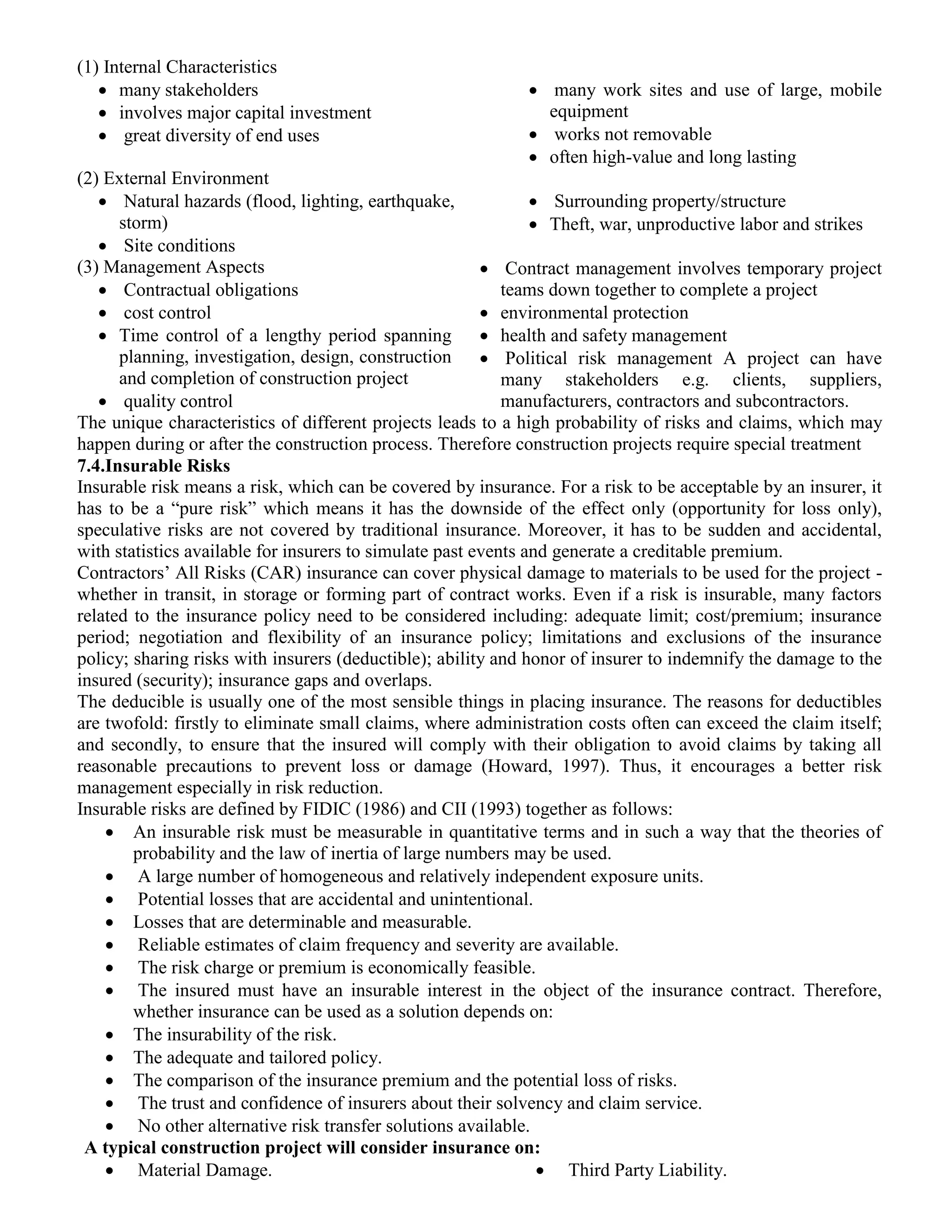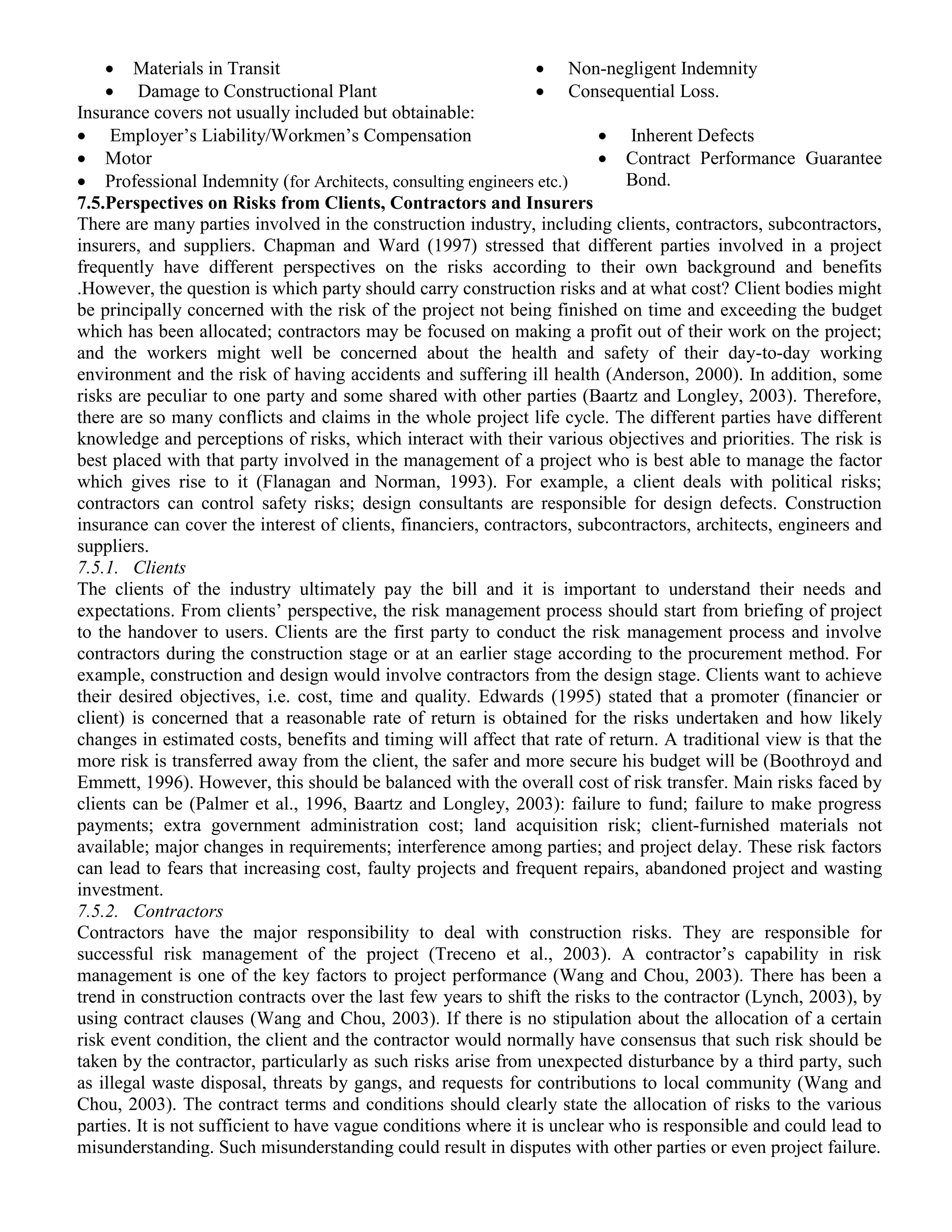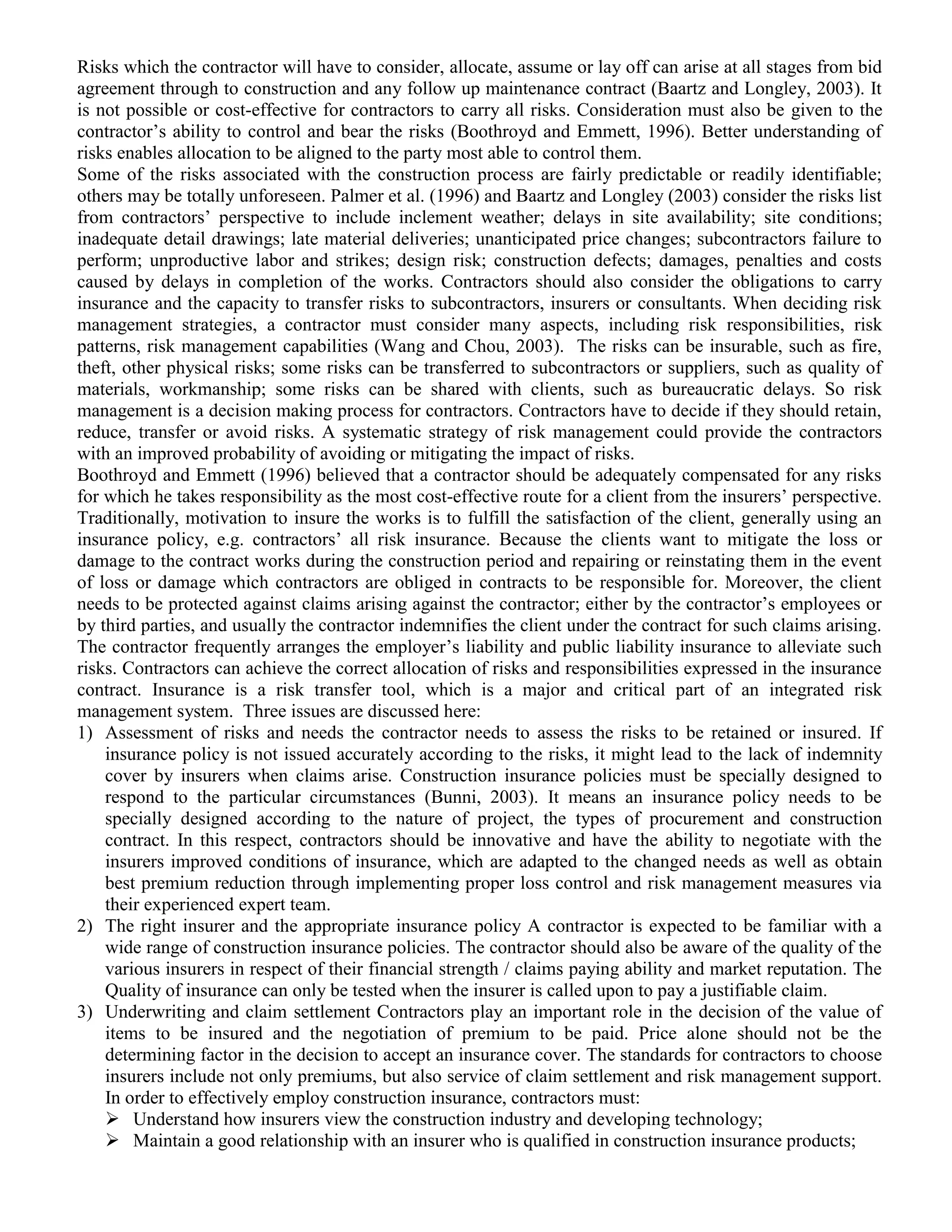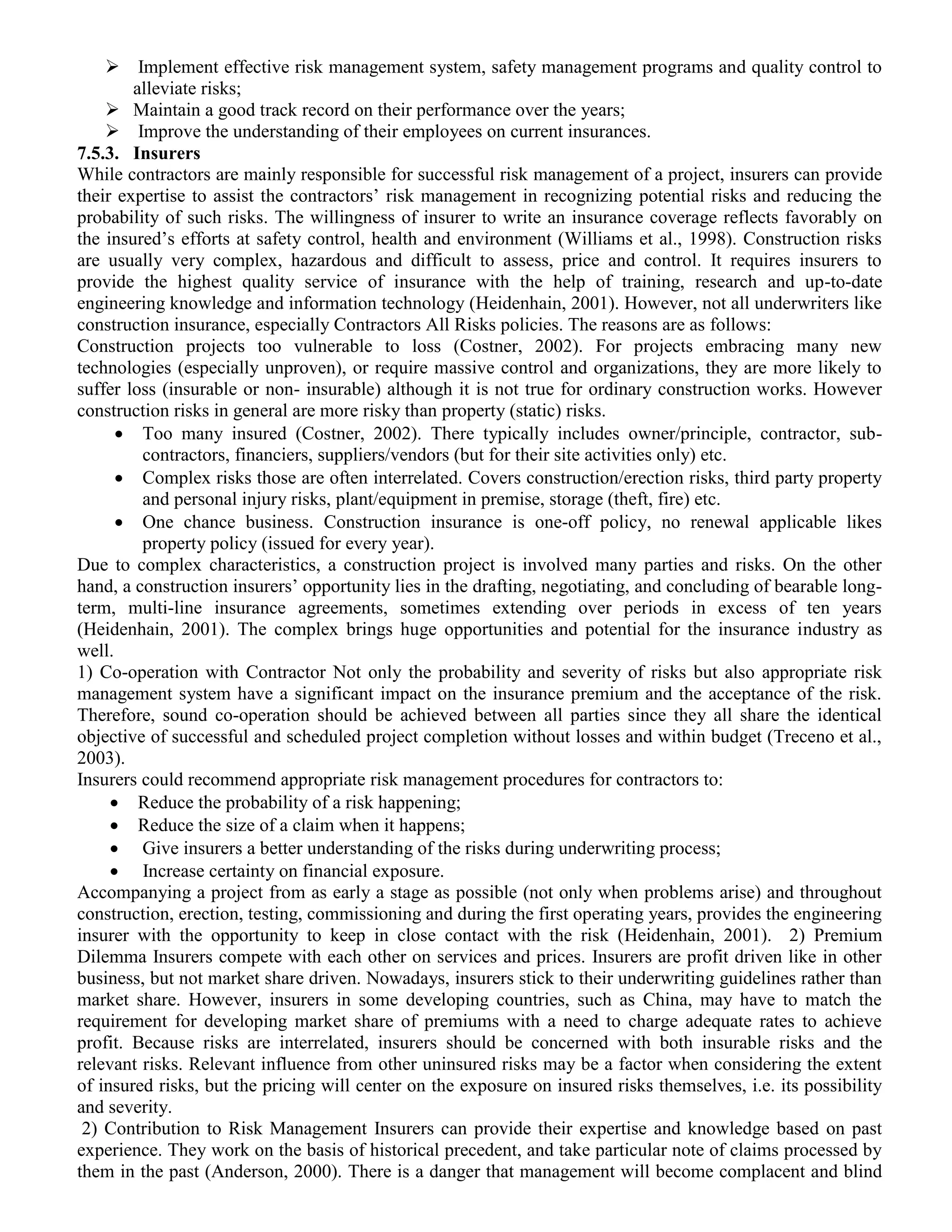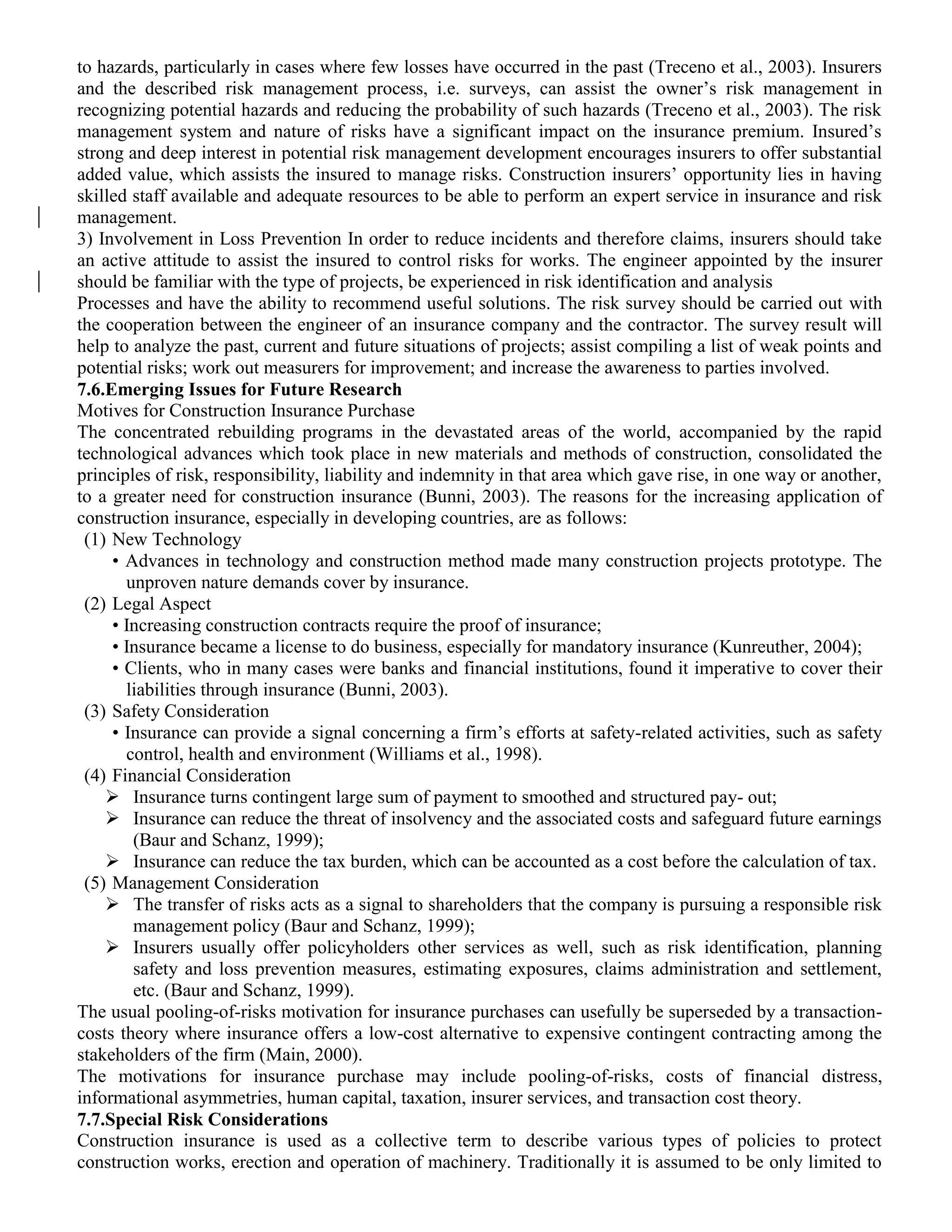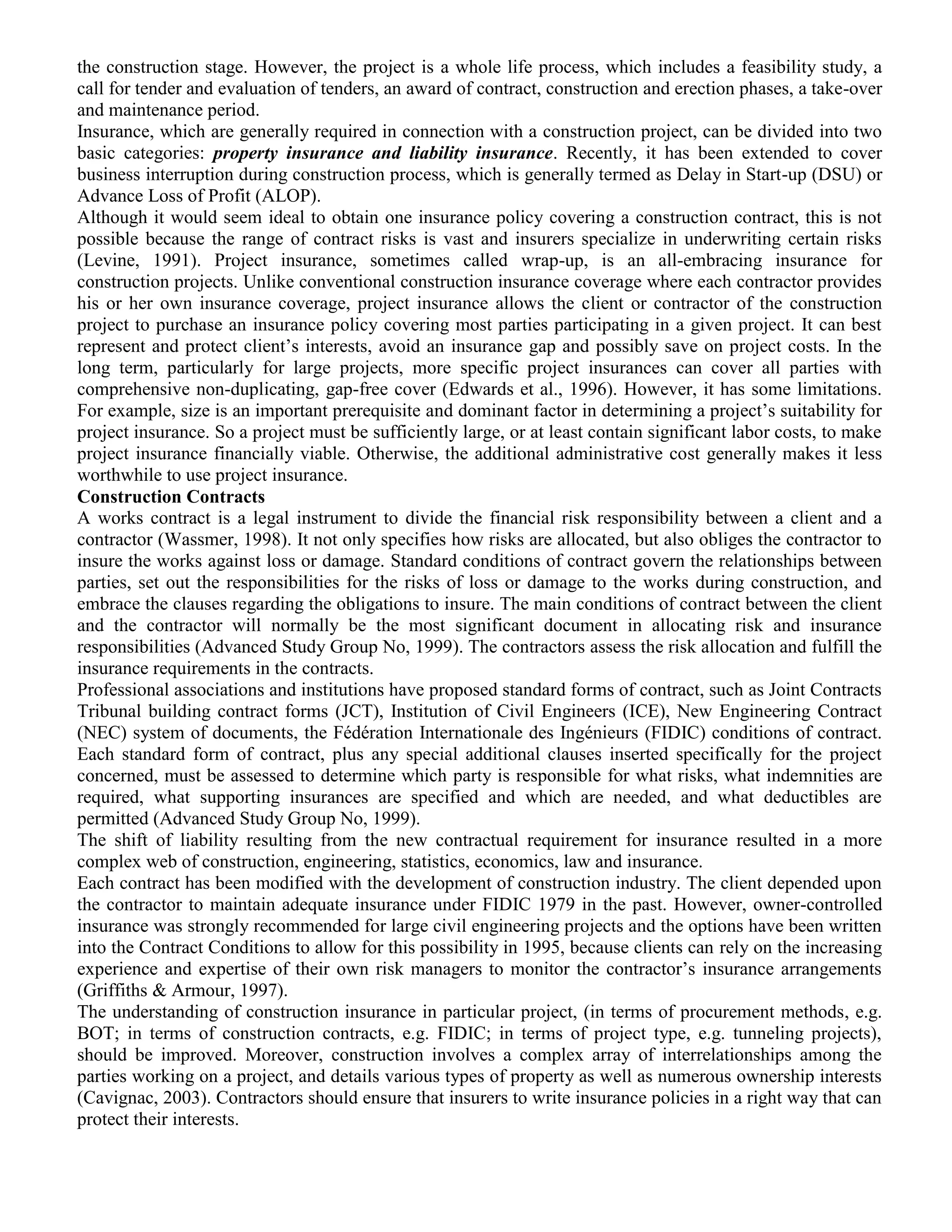Cost management involves planning and controlling a project's budget throughout its lifecycle. This includes estimating costs, creating a cost baseline budget, and monitoring actual costs against the budget. The document outlines 4 key steps to project cost management: 1) planning resources, 2) estimating costs, 3) creating a cost baseline budget by allocating estimates over time, and 4) controlling costs by tracking variances and taking corrective actions.
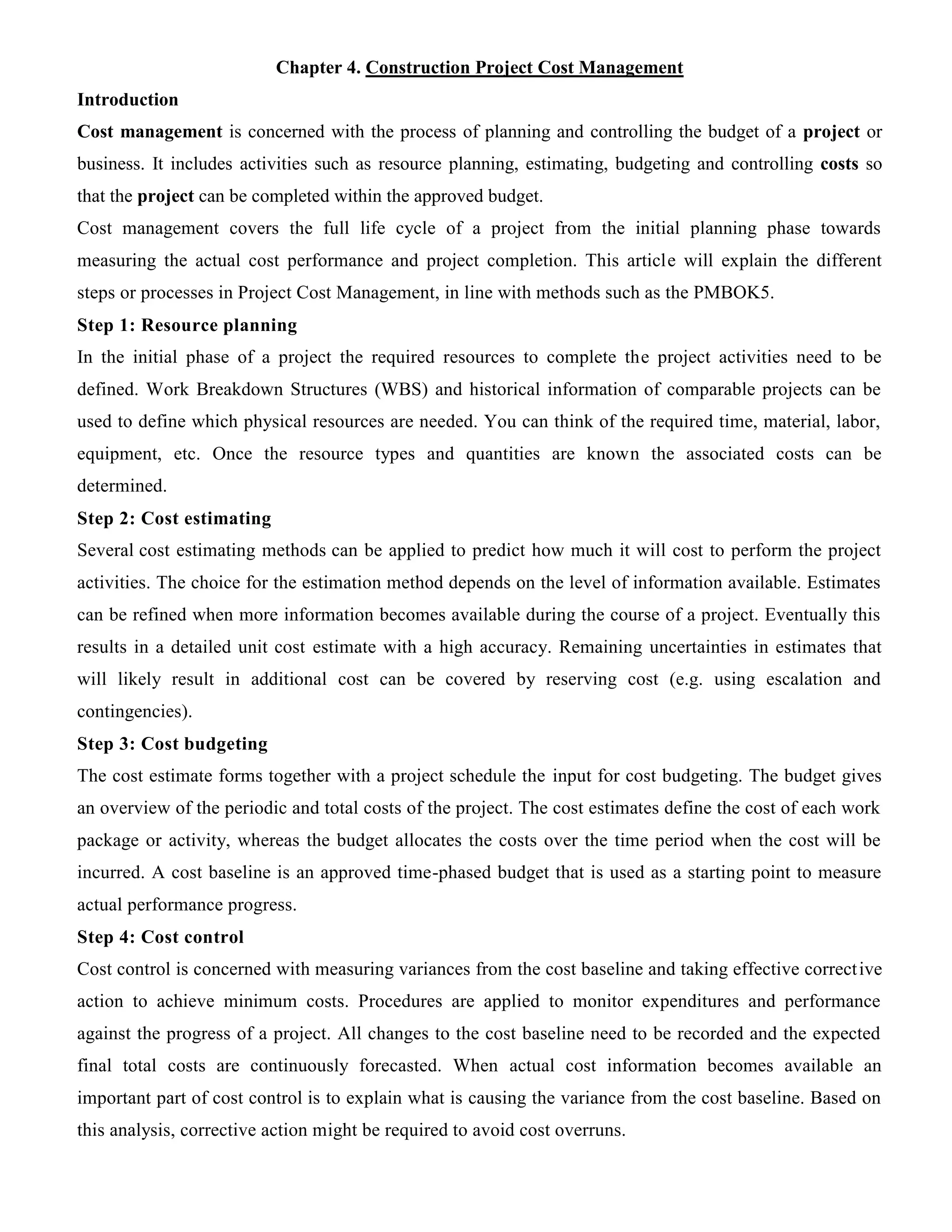
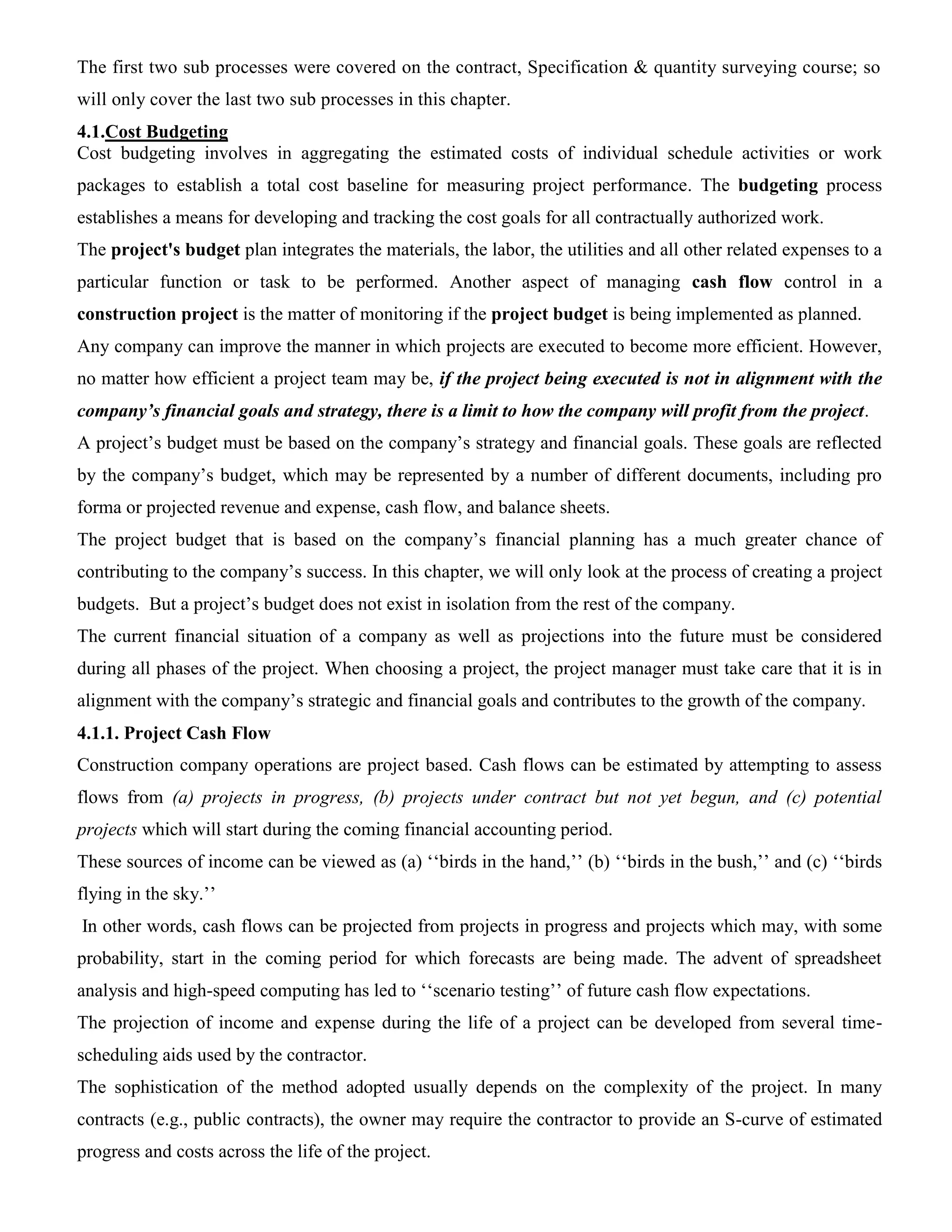
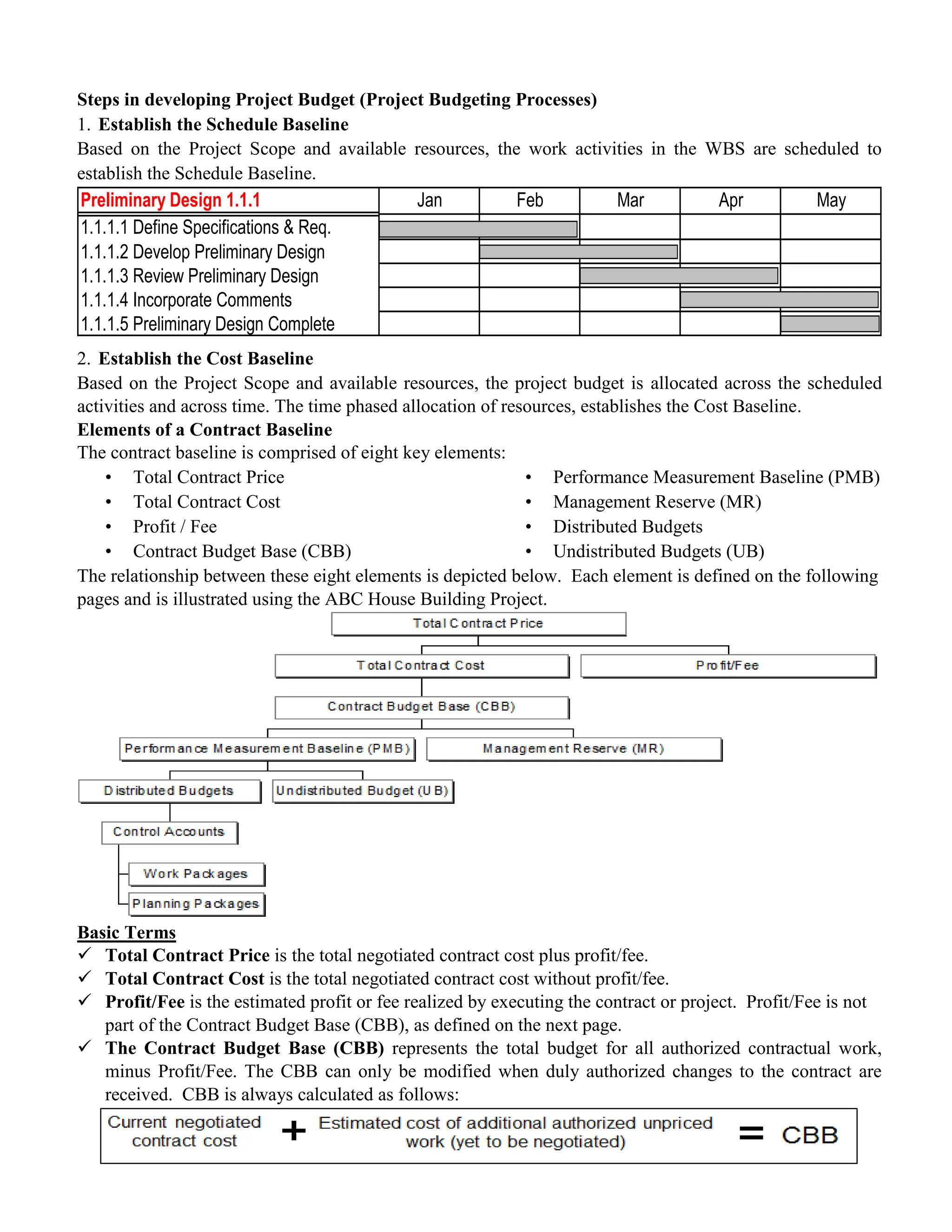
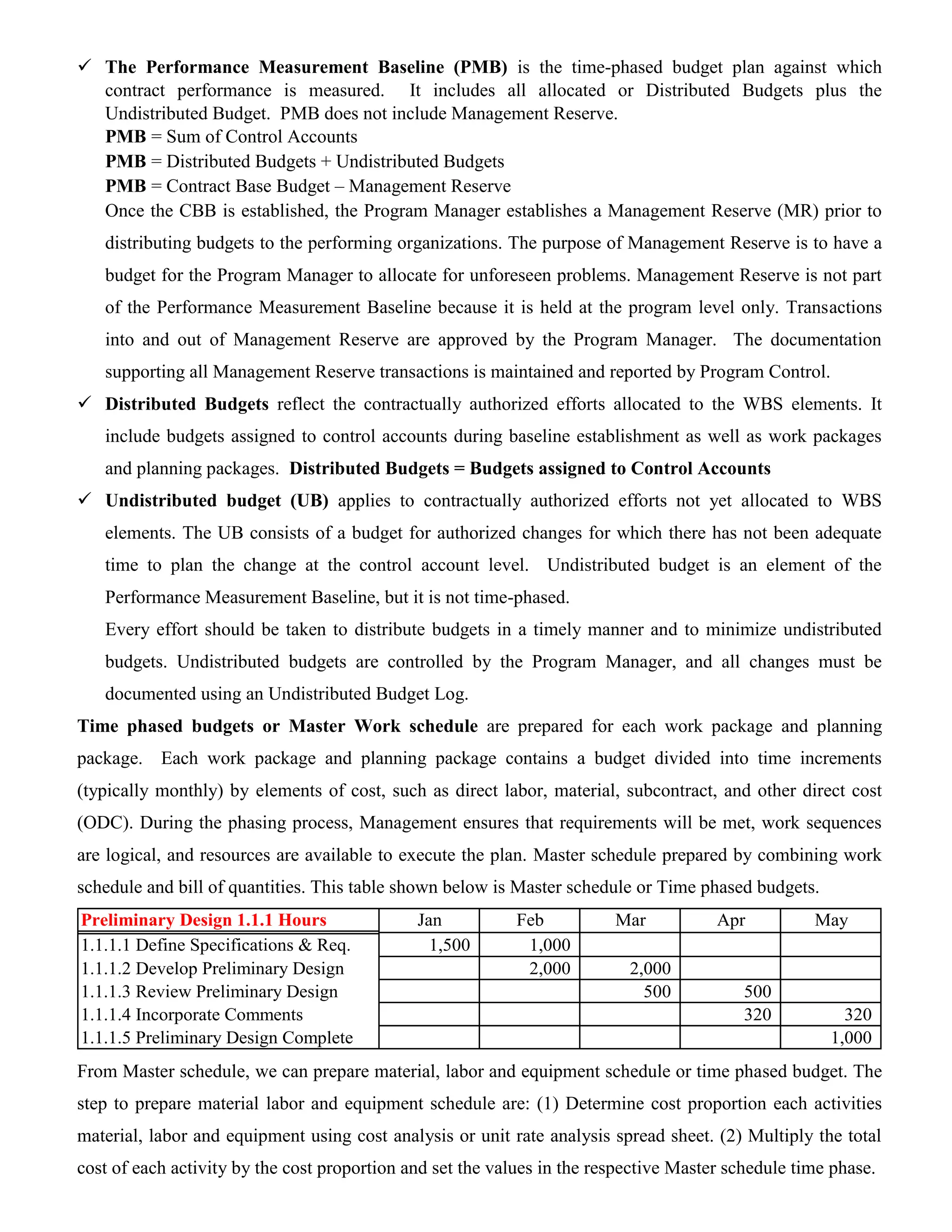
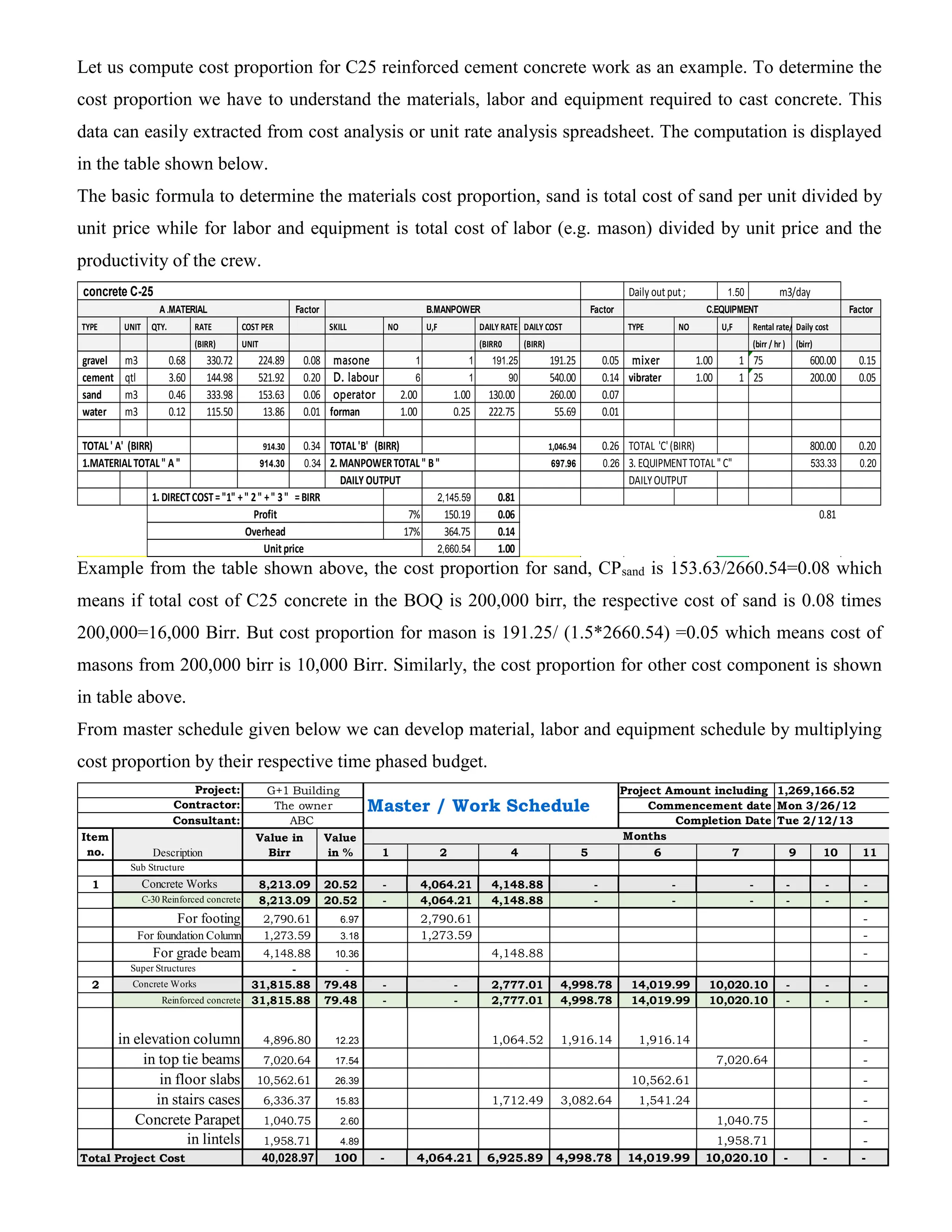
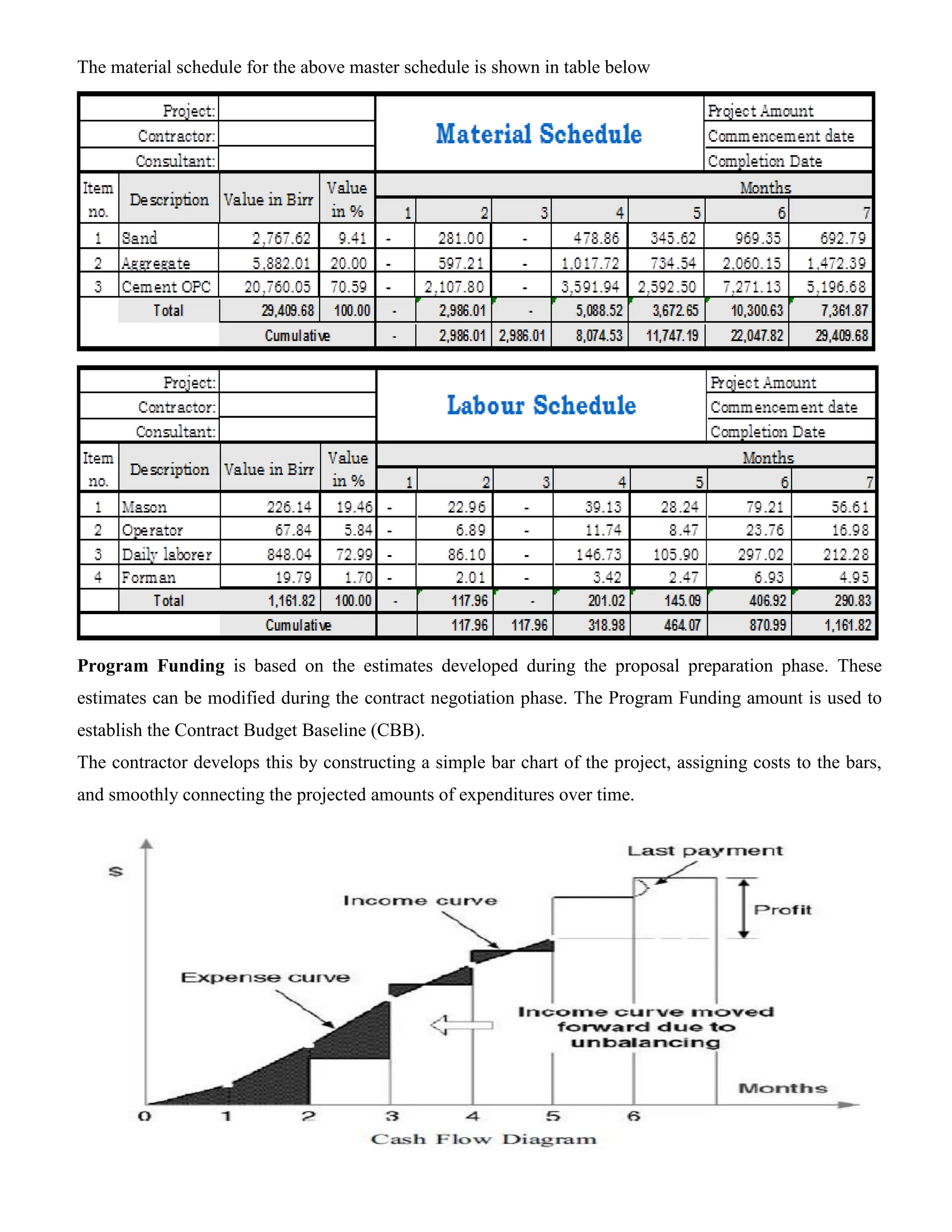
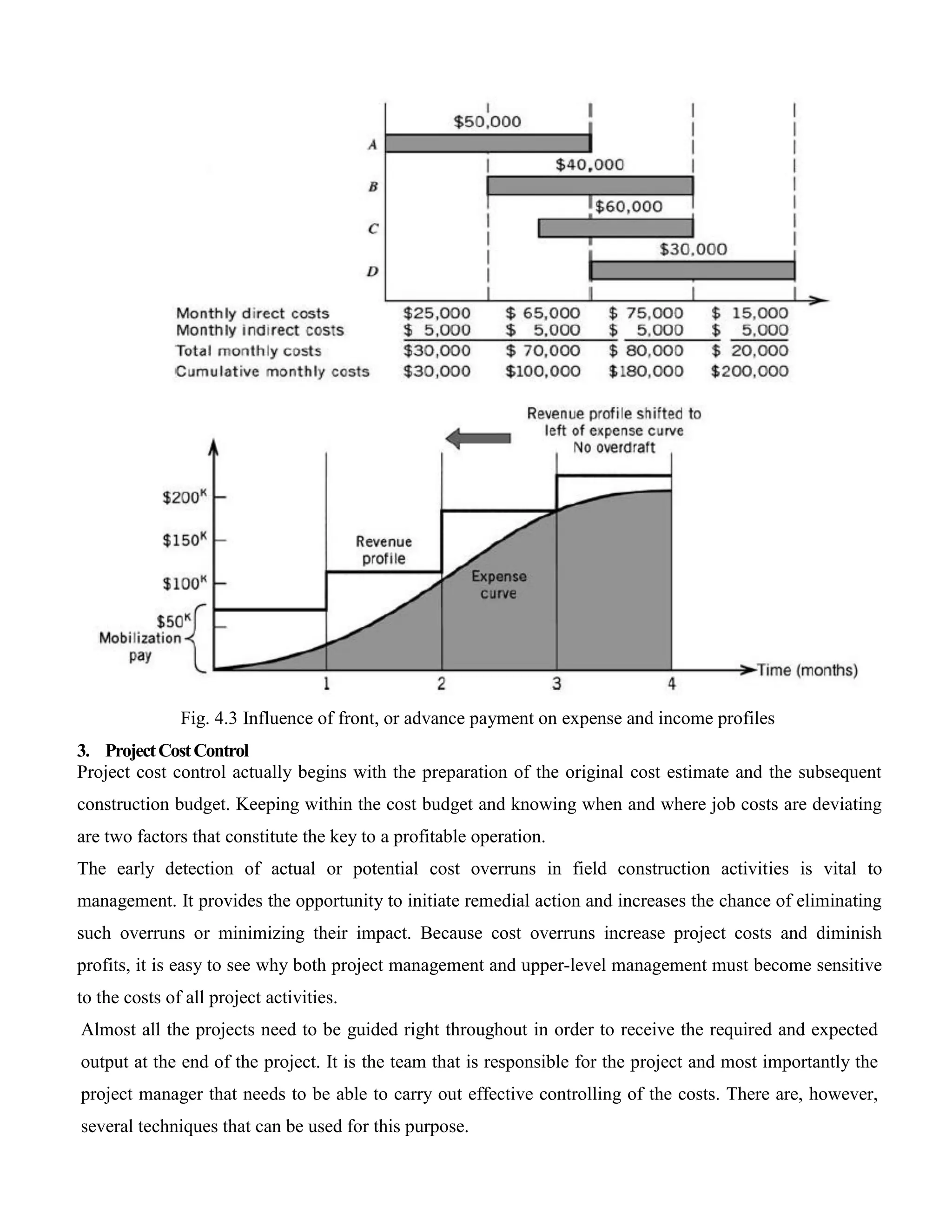
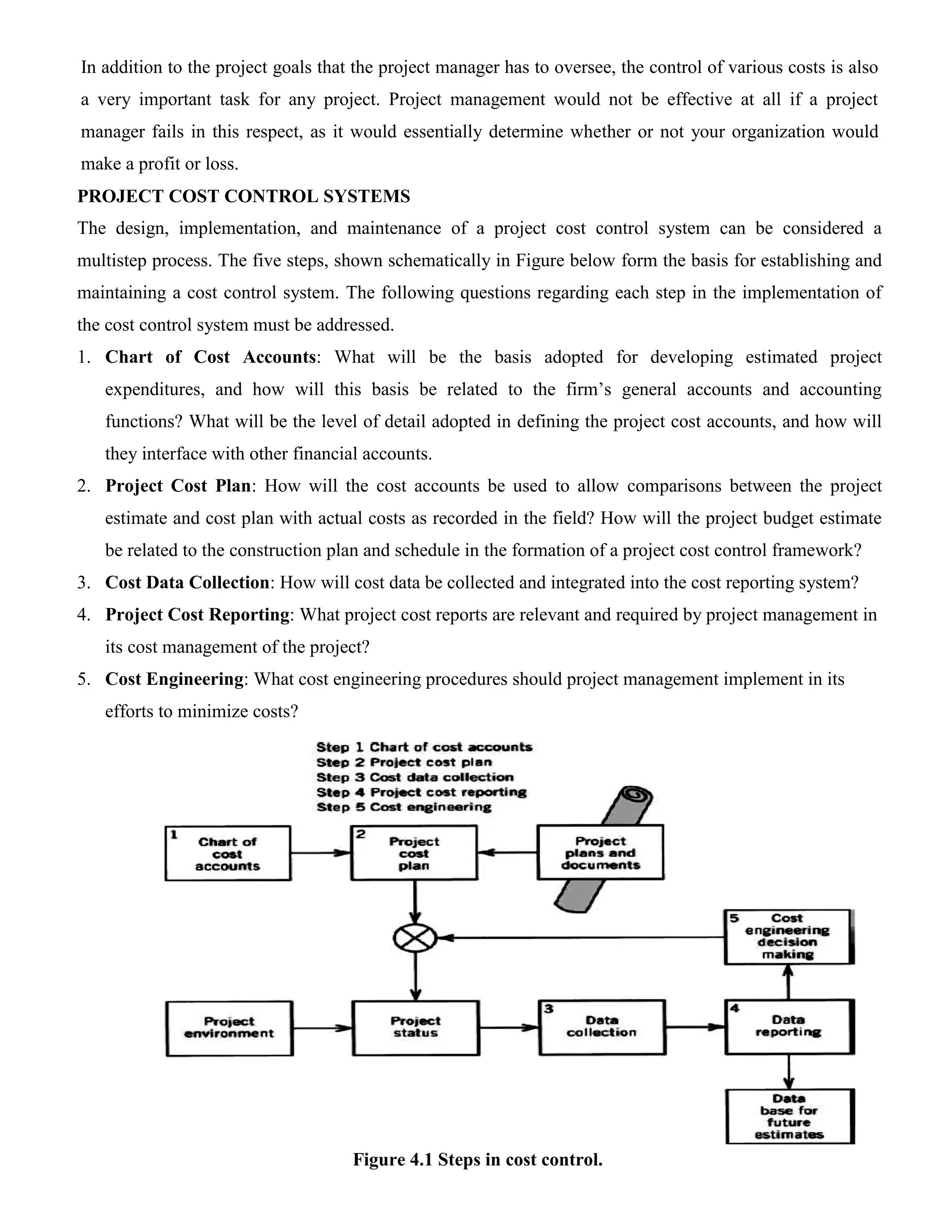
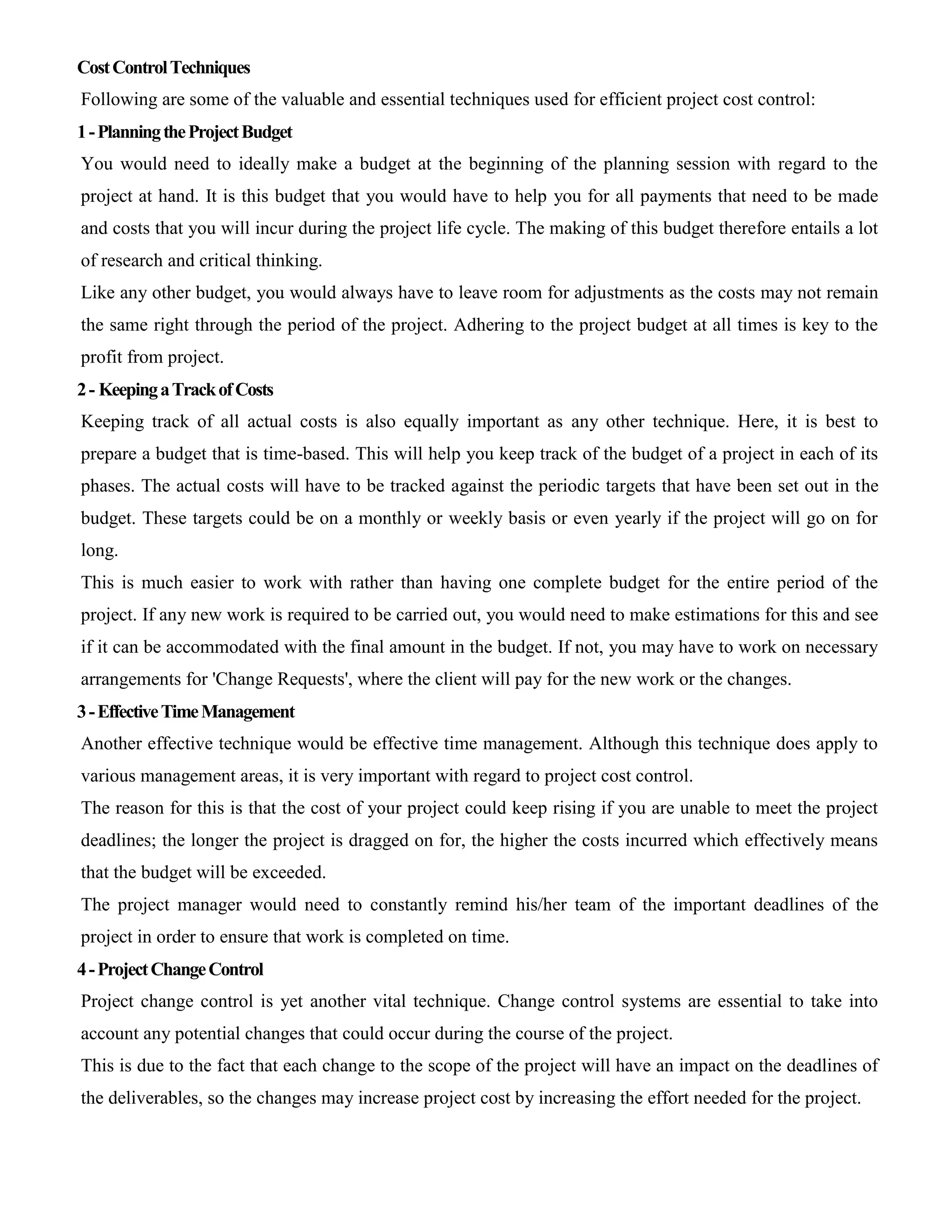
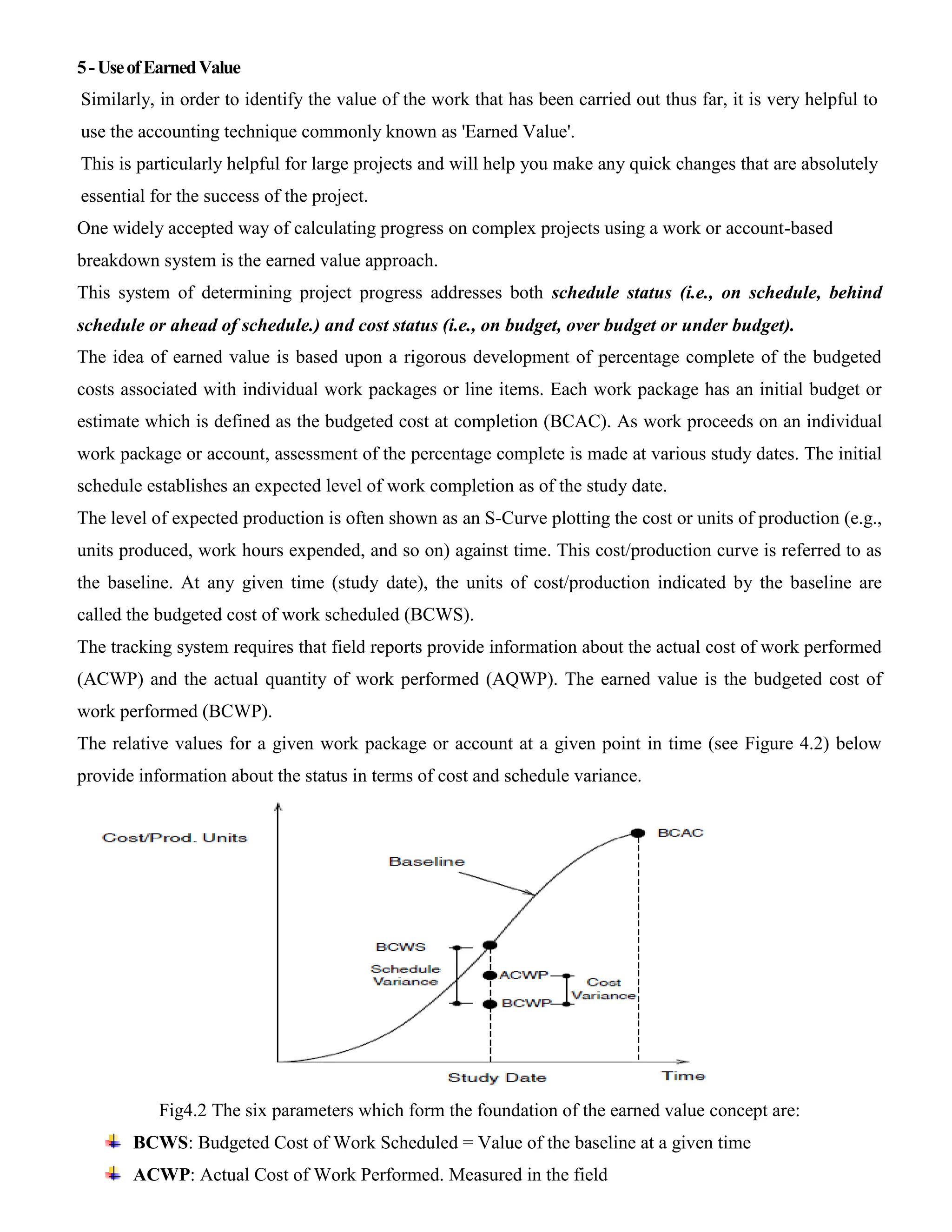
![BCWP: Budgeted Cost of Work Performed= [% Complete] X BCAC
BCAC: Budgeted Cost at Completion = Contracted total cost for the work package
AQWP: Actual Quantity of Work Performed. Measured in the field
BQAC: Budgeted Quantity at Completion. Value of the quantity baseline as projected at a given
point.
Example
To put these terms into context, consider the small project shown in Figure below. The project consists of
two control accounts ‘‘A’’ and ‘‘B.’’ A consists of two
subaccounts, A.1 and A.2. The information for these
work packages depends on its cutoff date (the ‘‘now’’
date – obviously, each date may have different values),
and for the example it is given in Table below.
Table: Study Date Data for Simple Project
Project PC (PPC) = Total BCWP ÷ Total BCAC = 124.3 ÷215= 57.8%
ECACi = Estimated Cost at Completion for Work Package i =ACWPi ÷ PCi
In this example, the budget is expressed in worker hours so the baseline for control is in worker hours. The
estimated total number of worker hours for this scope of work is 215 (the sum of the estimated worker
hours for A.1, A.2, and B). The BCWP or earned value for a given work package is given as:
BCWPi = PCi _ BCACi
Where i-is the work package or account label, and PC is the percentage complete as of the study date.
The percent complete (PC) for each package is based on the ratio of the actual quantities (i.e., it’s AQWP)
divided by its Budgeted Quantity at Completion (i.e., BQAC) based on the latest quantity assessment. If we
know the original quantity estimate is 100 units but updated information indicates that a total of 120 units
will be required to complete the work, completion of 50 units would not indicate 50 percentage complete.
The correct PC would be 50/120(i.e., AQWP/BQAC).
Based on the information in Table 17.2, the PC for each work package in the small project would be:
PC (A:1) 35/105 = 0:333
PC (A:2) 60/77 = 0:780
PC (B) = 100/125 = 0:800, hen
BCWP Project) = 0.333(100) + 0.78 (50) + 0.8(65) = 33.3 + 39 + 52 = 124.3](https://image.slidesharecdn.com/cpmlecturenote4567-231019061901-c5bef43e/75/CPM-lecture-note-4-5-6-7-pdf-11-2048.jpg)

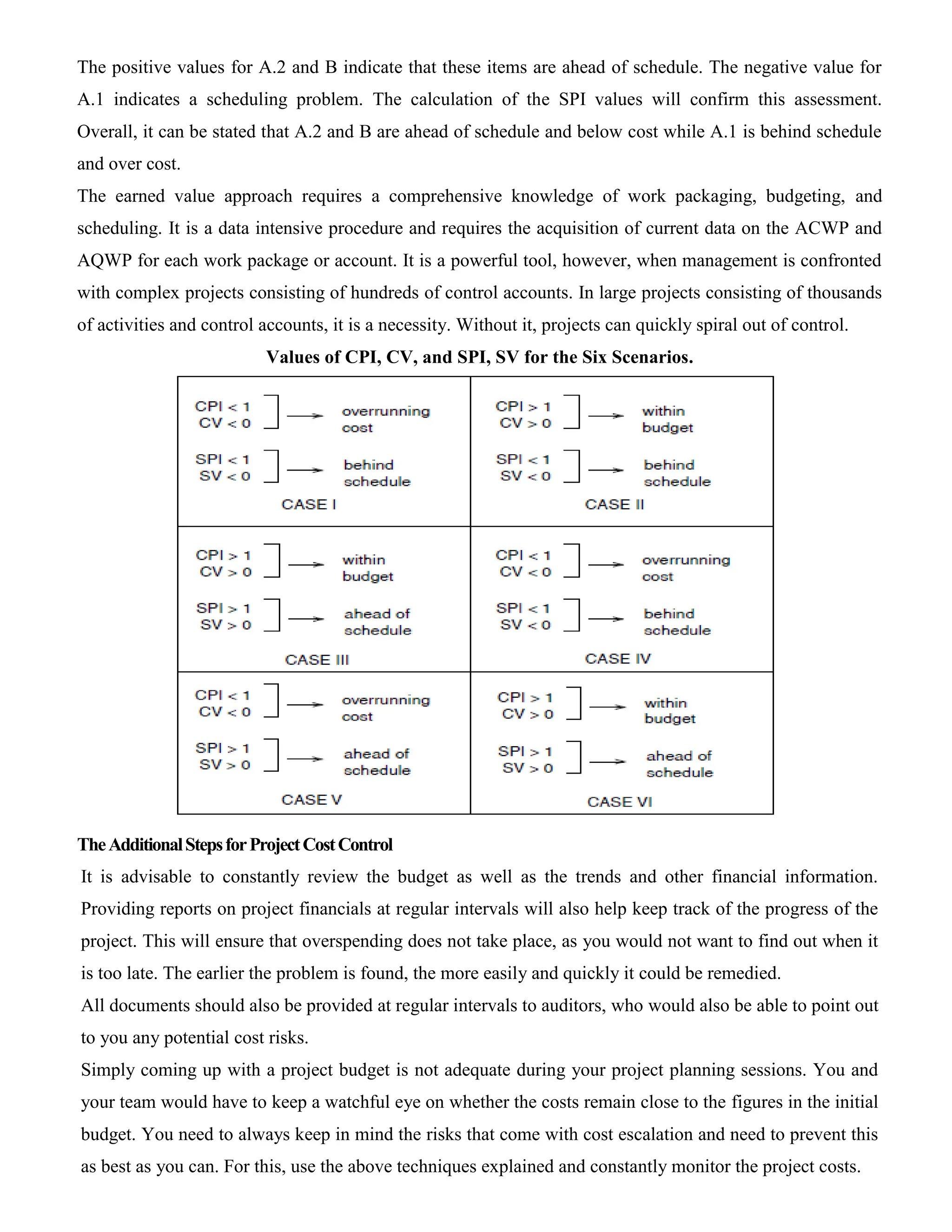
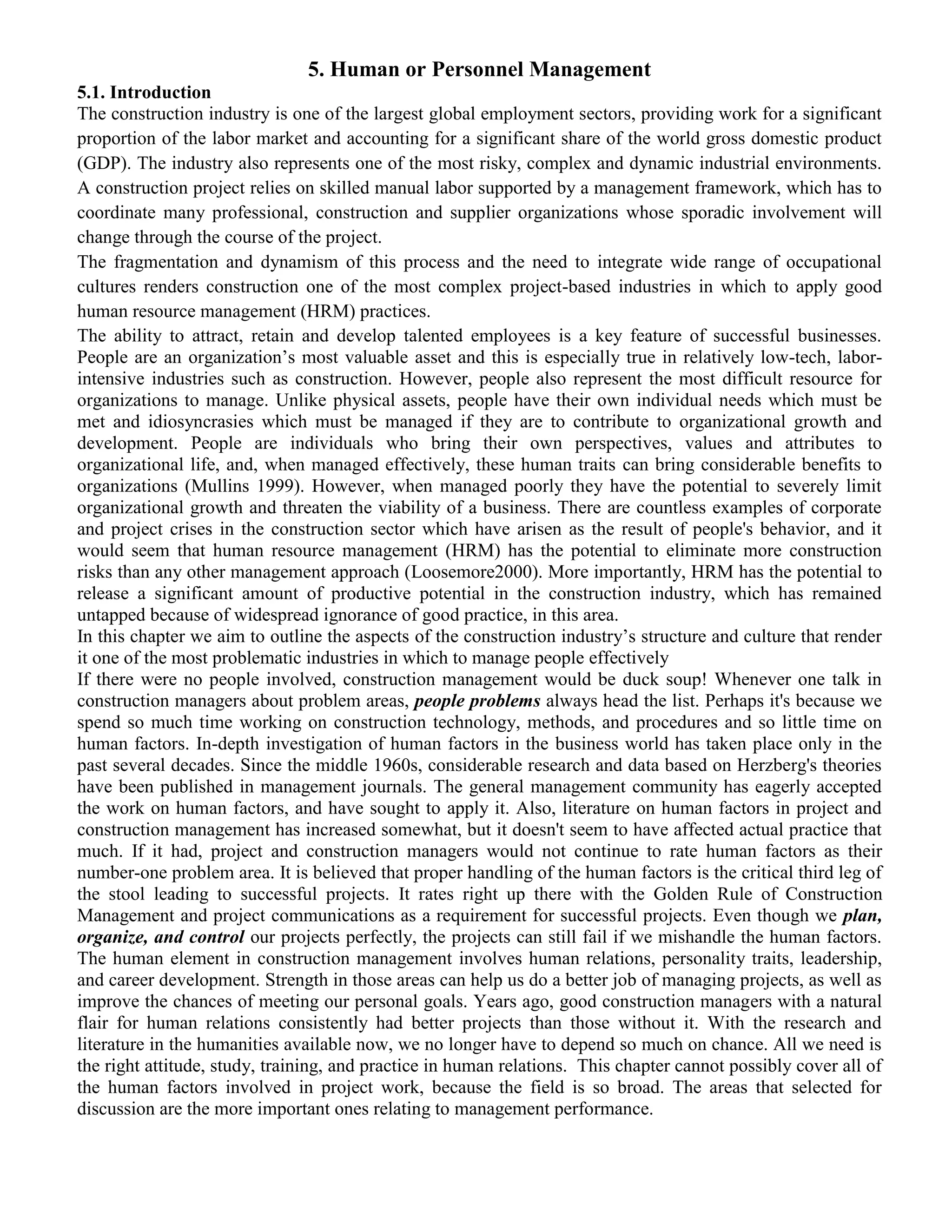
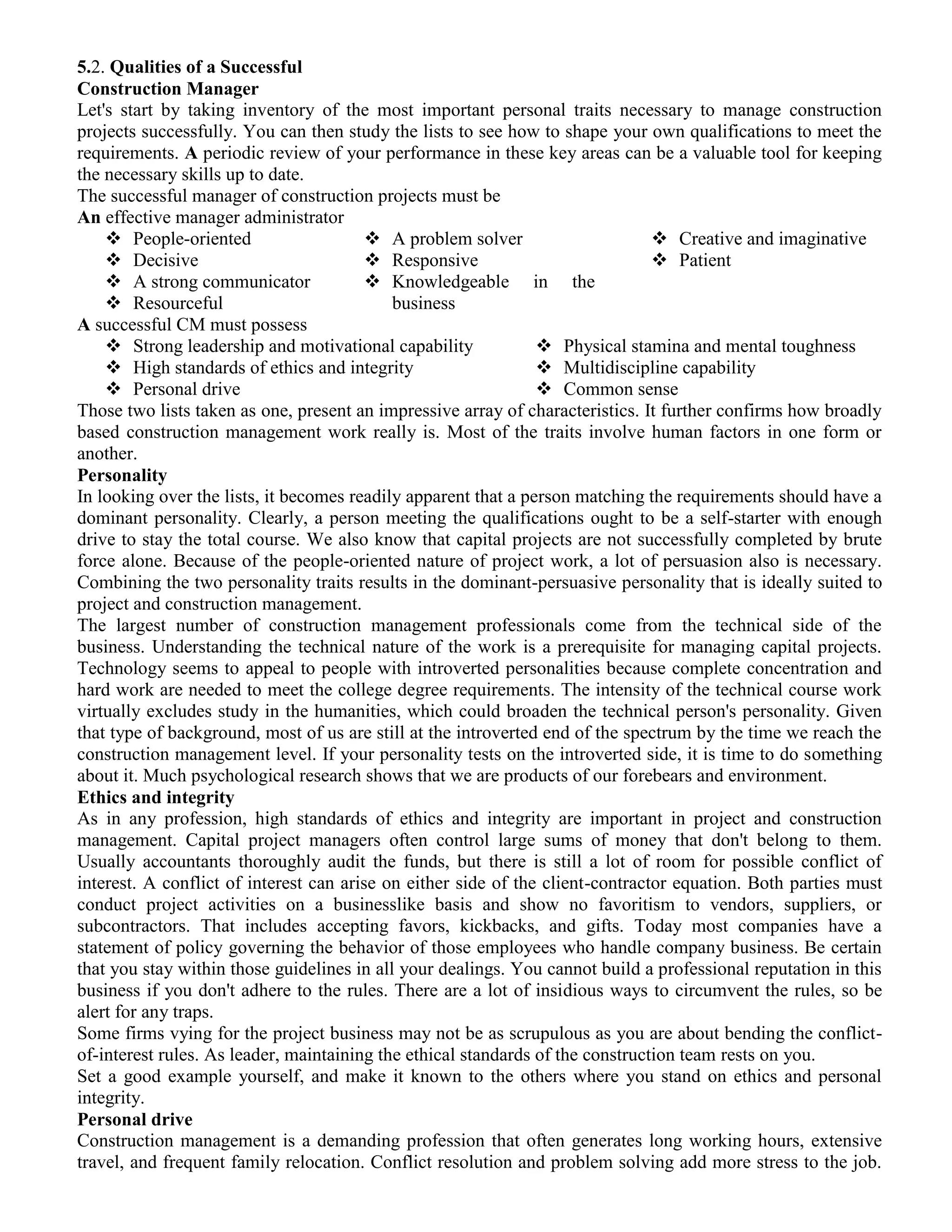
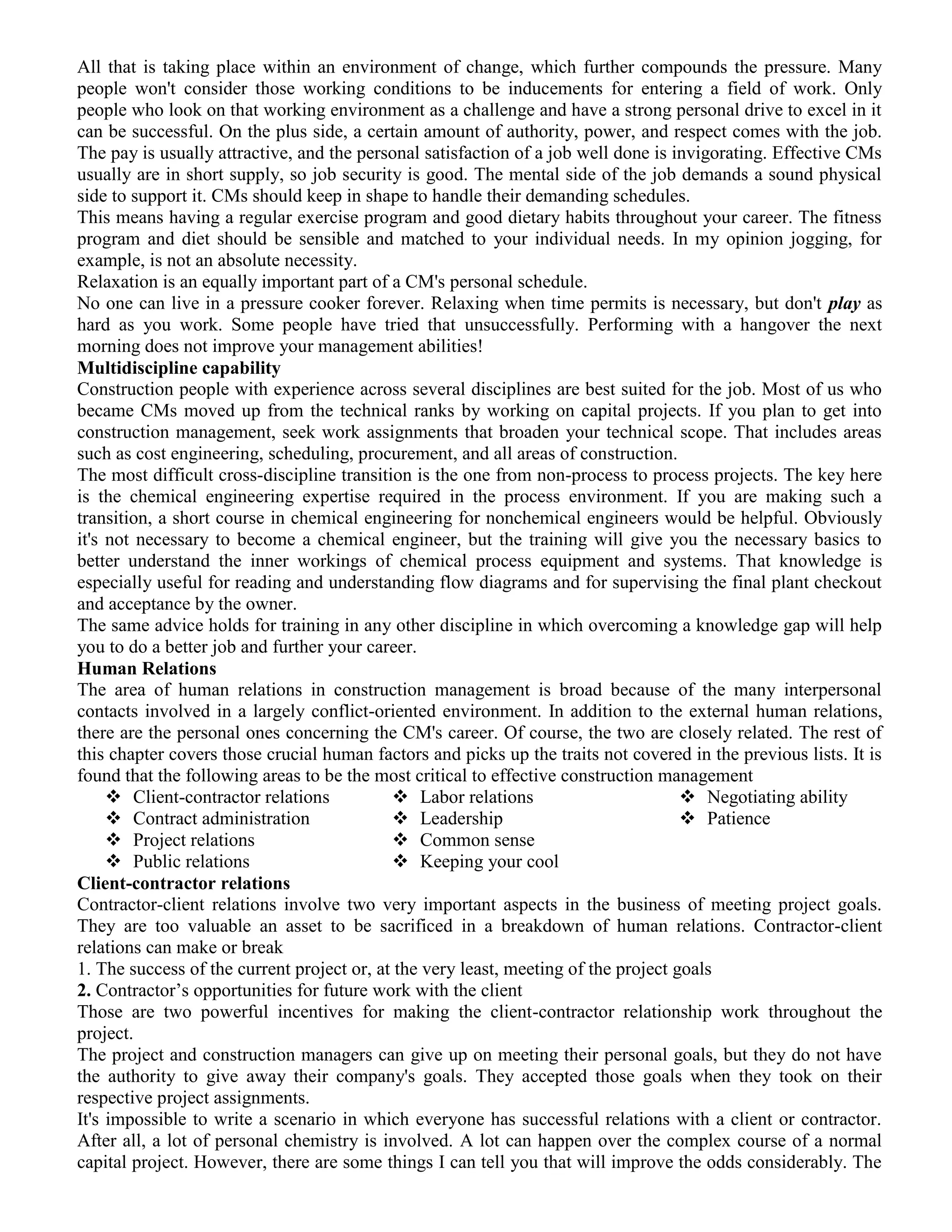
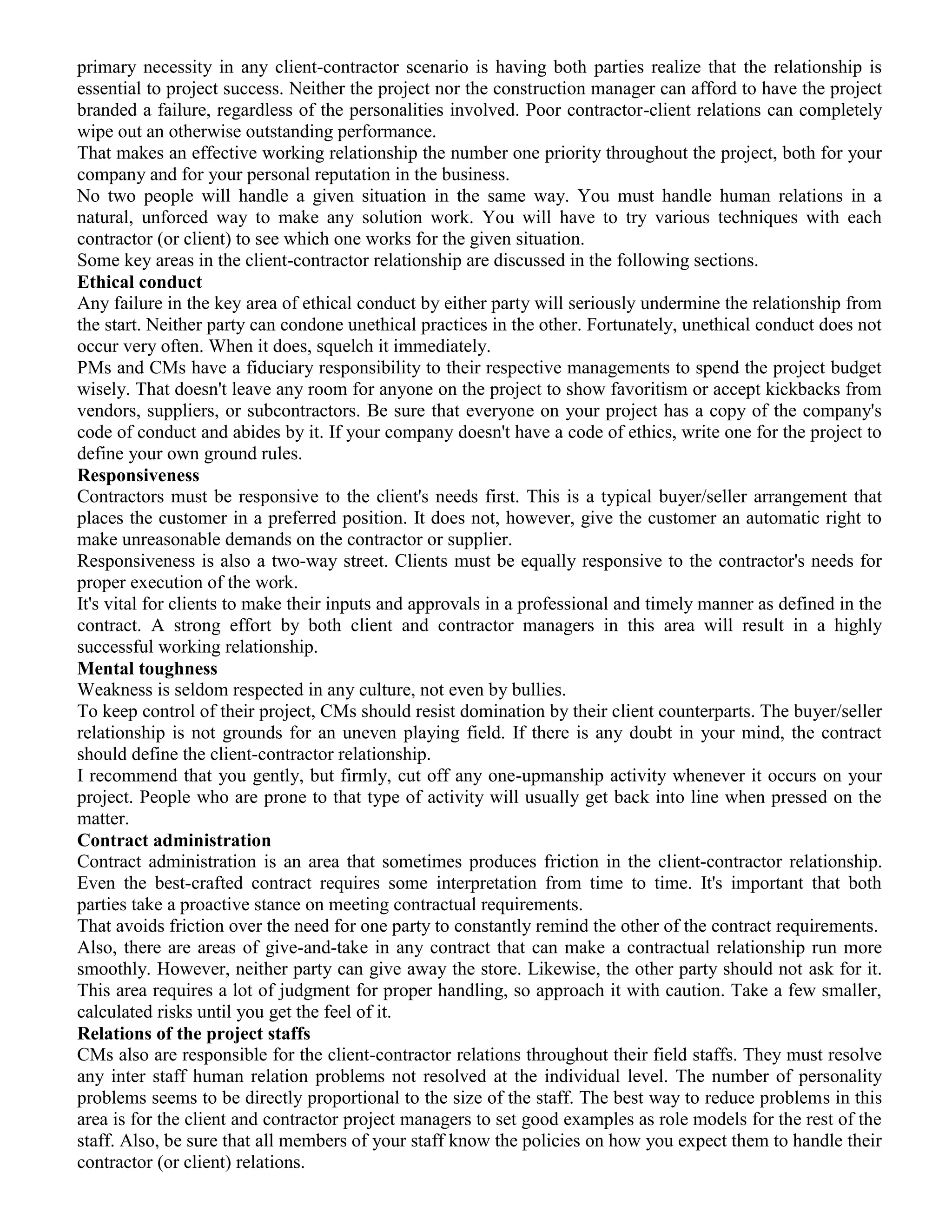
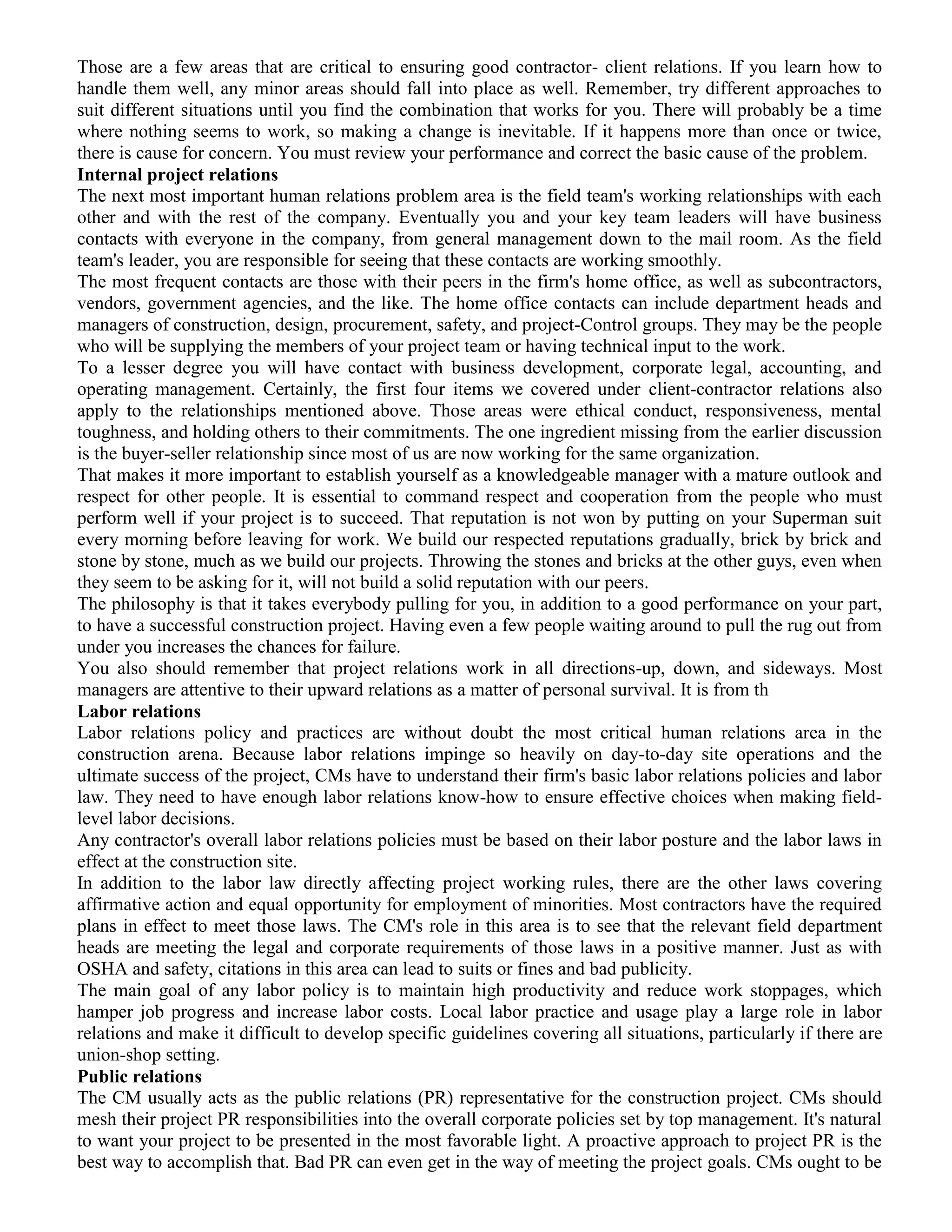
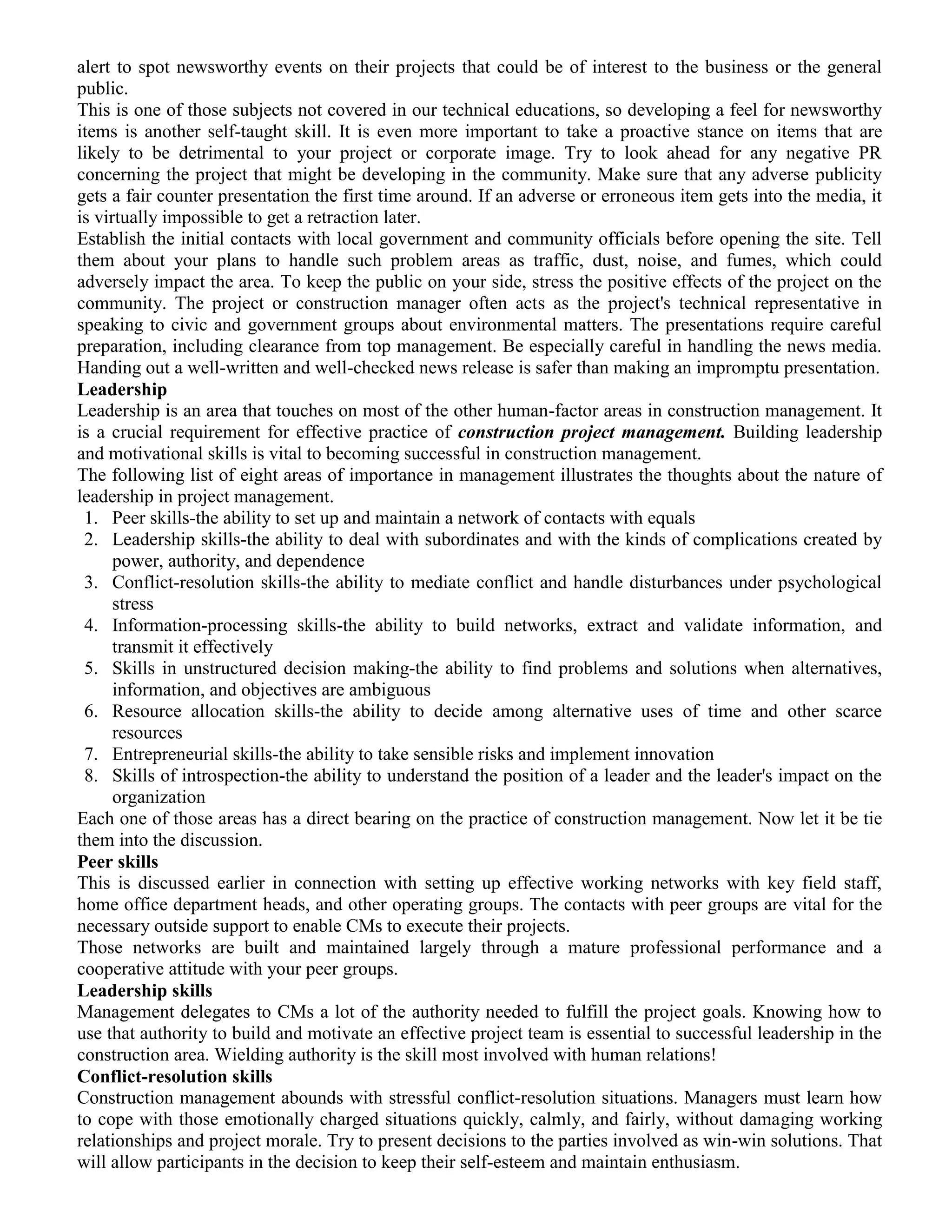
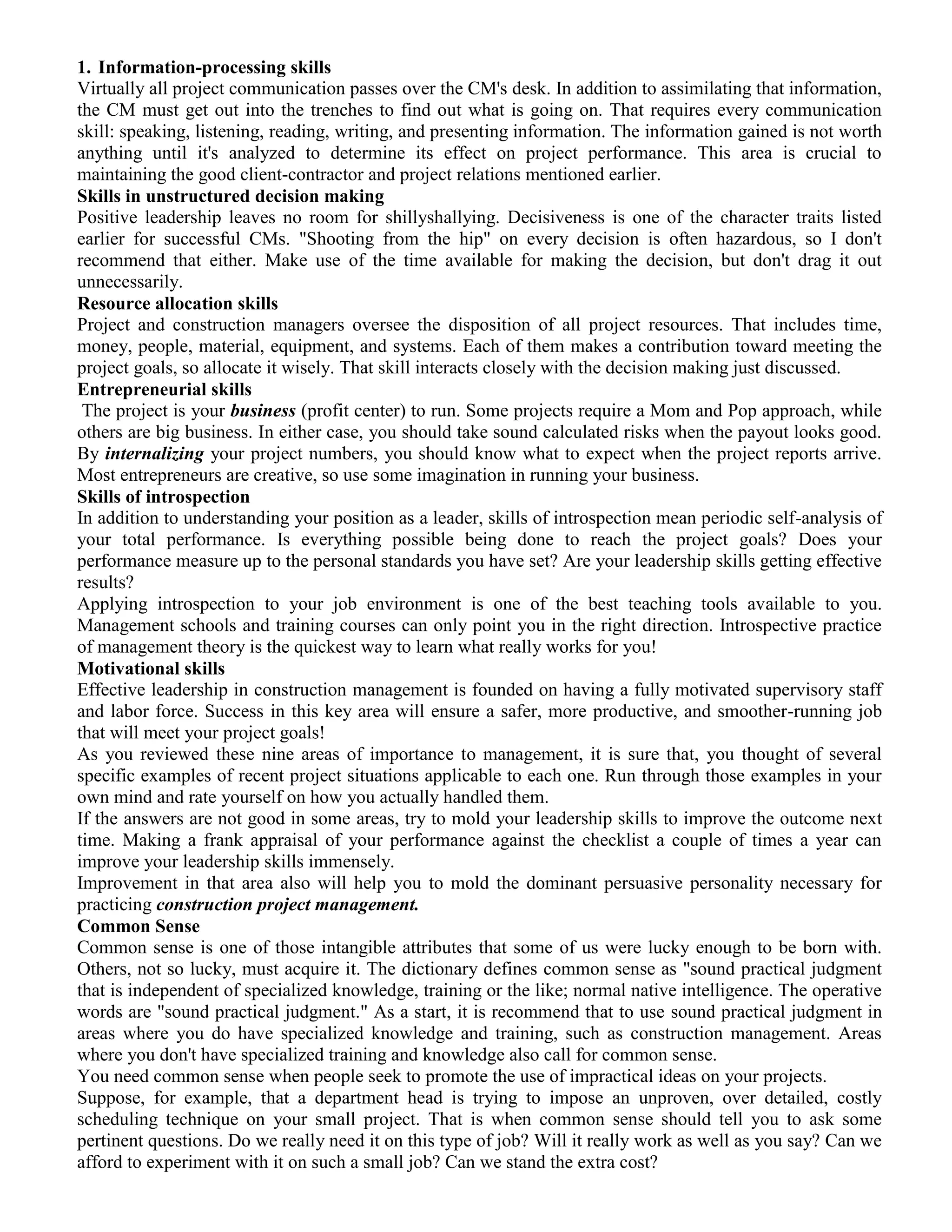

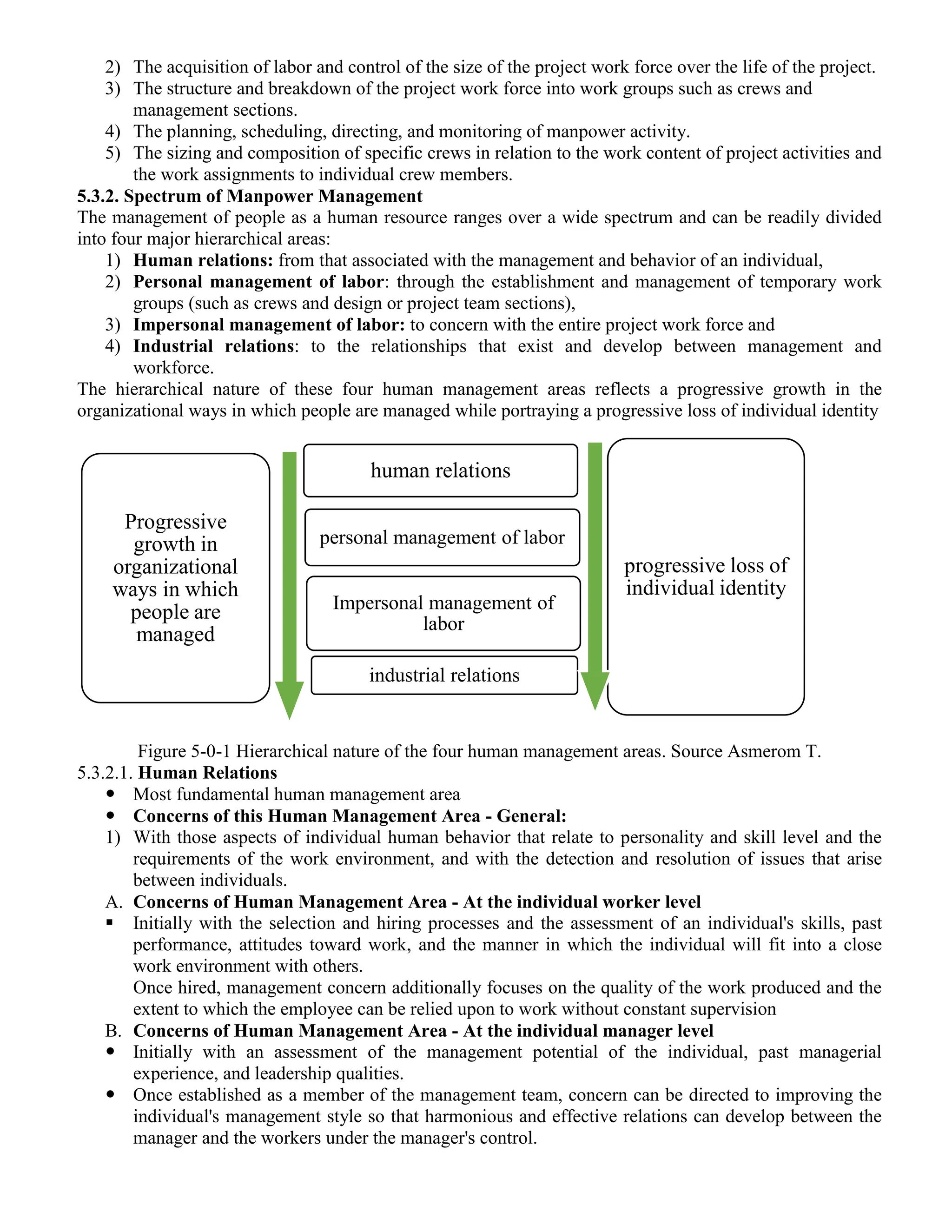
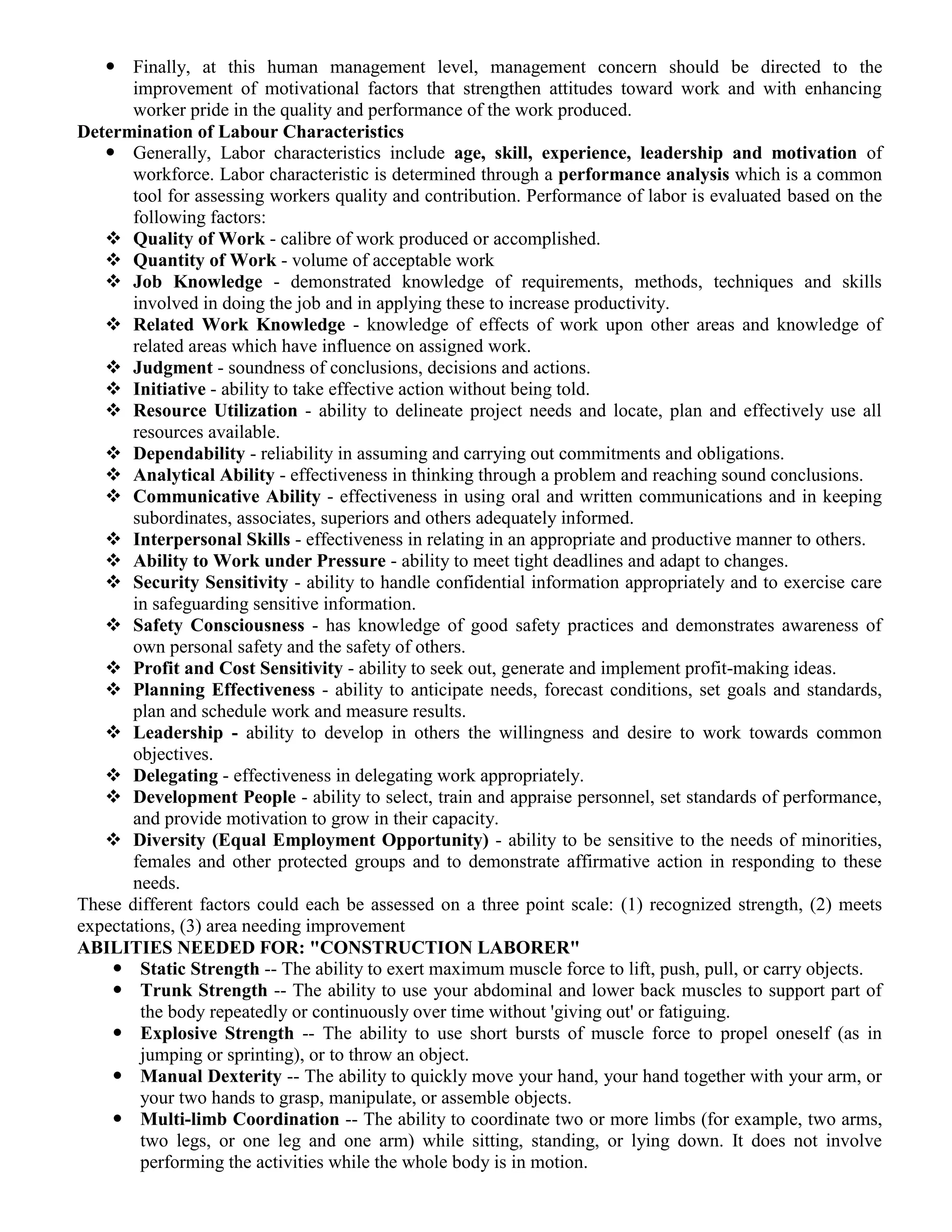
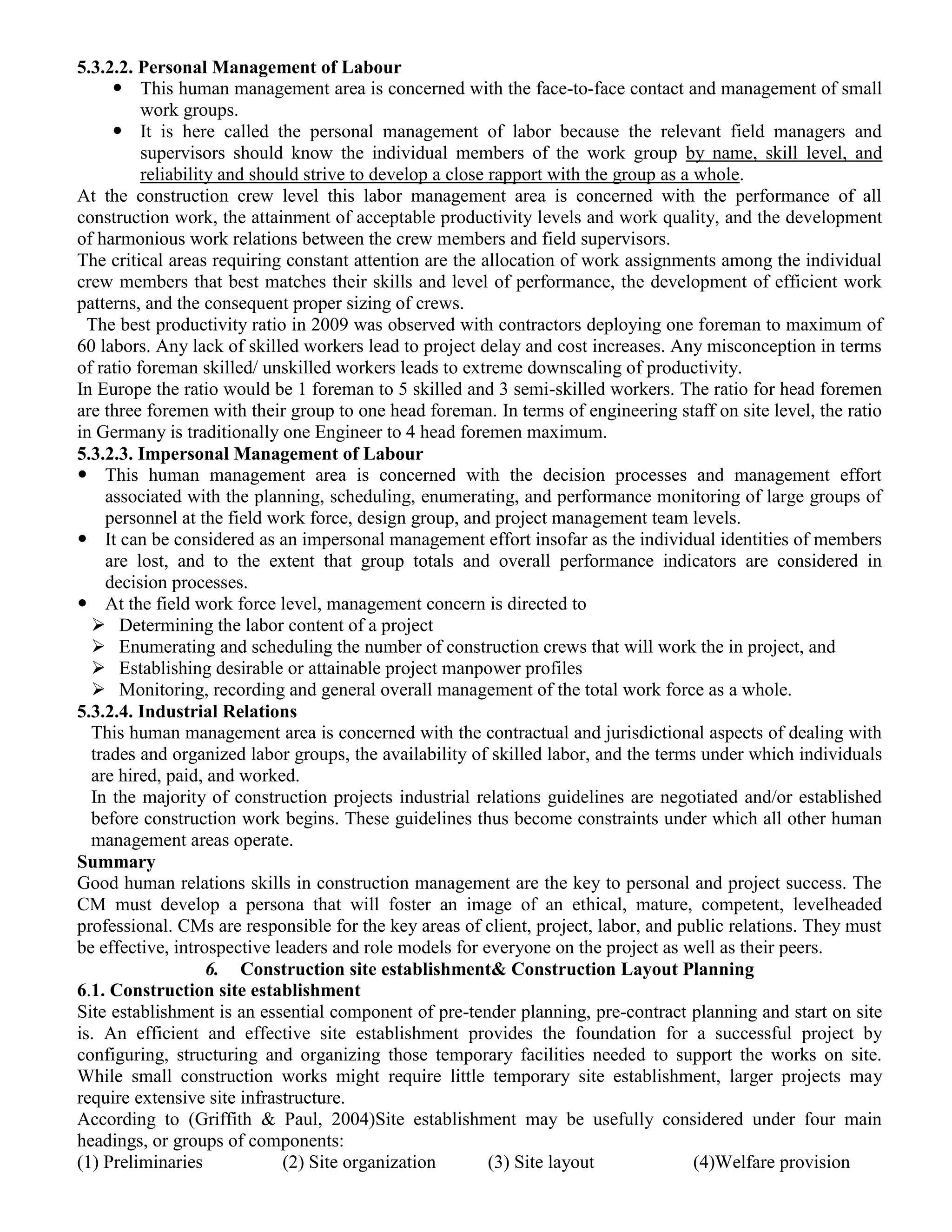

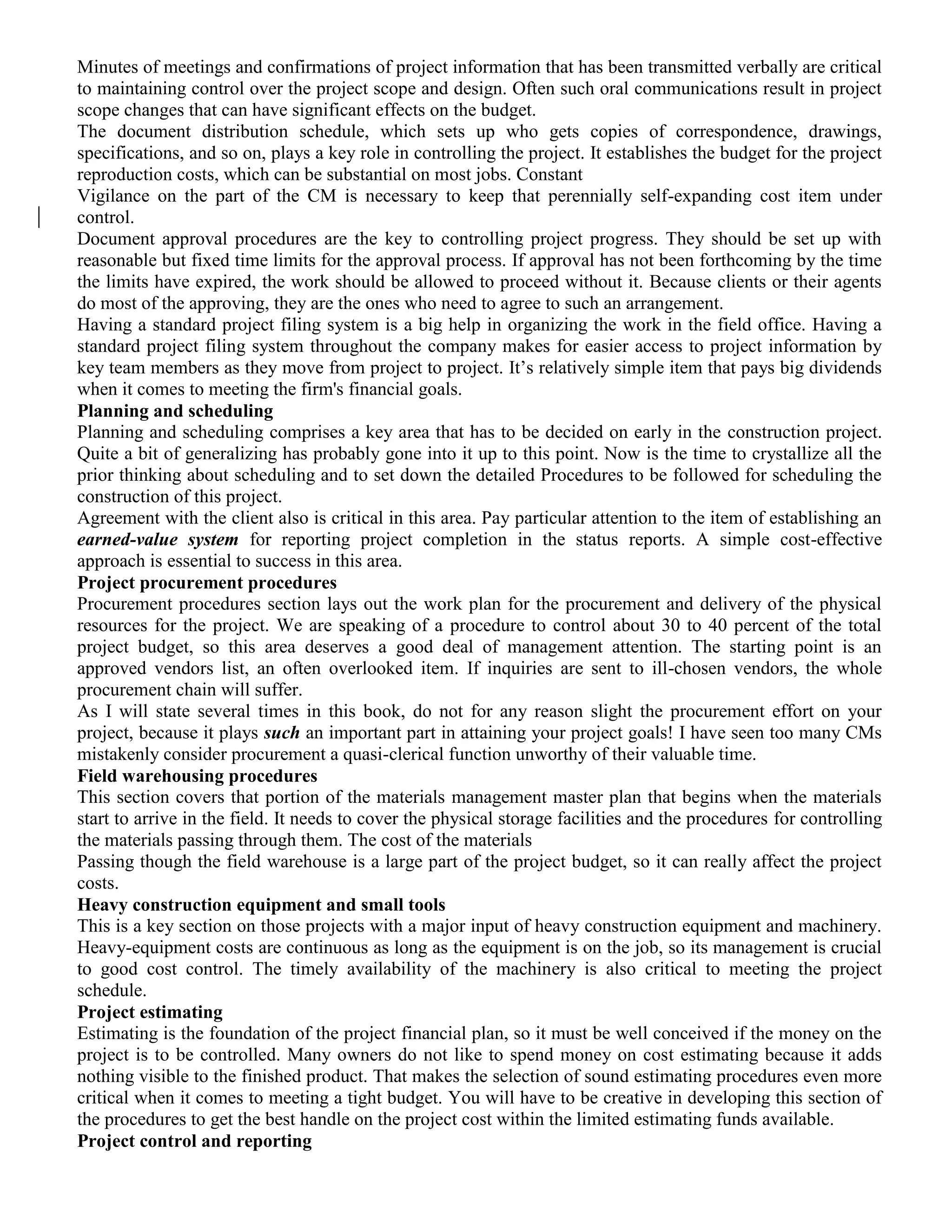
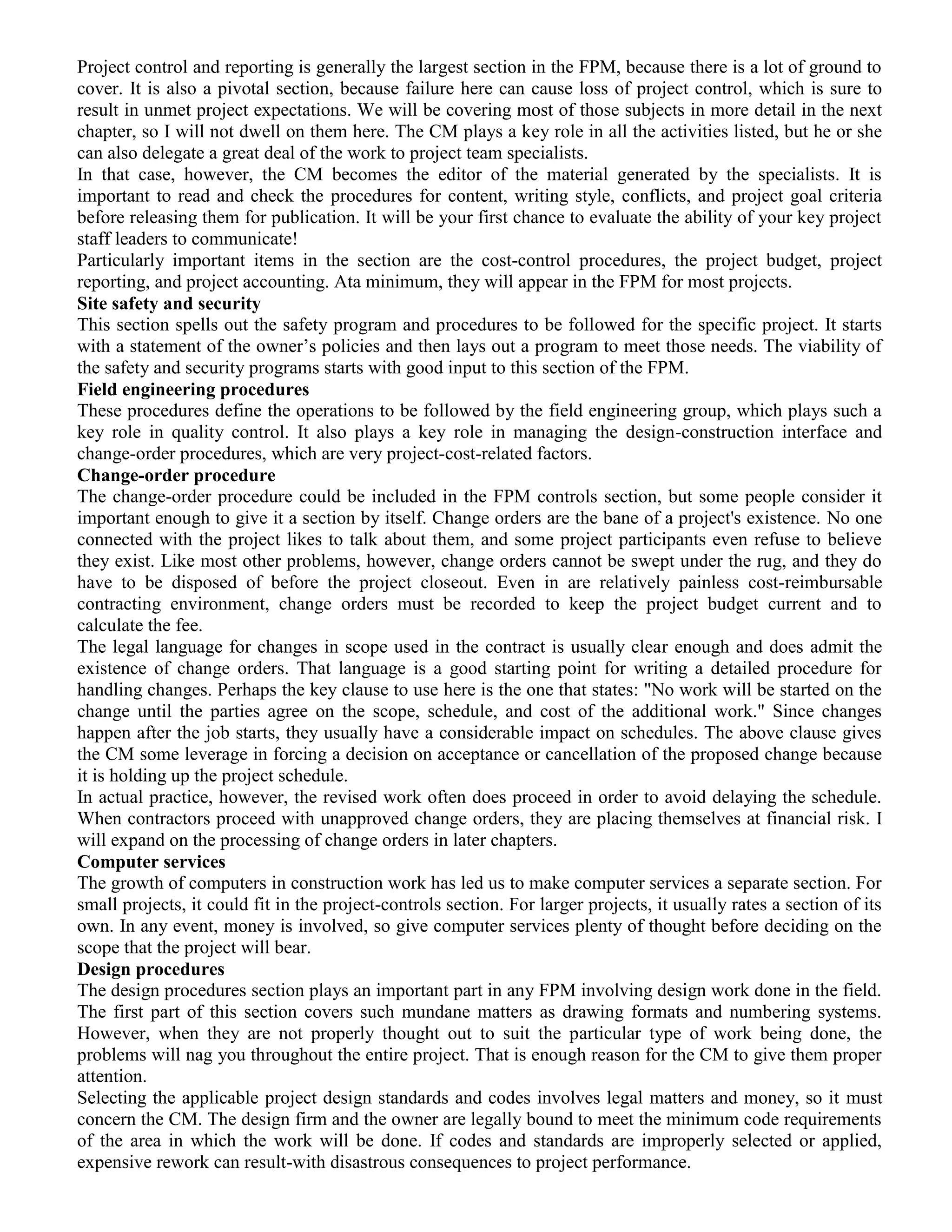
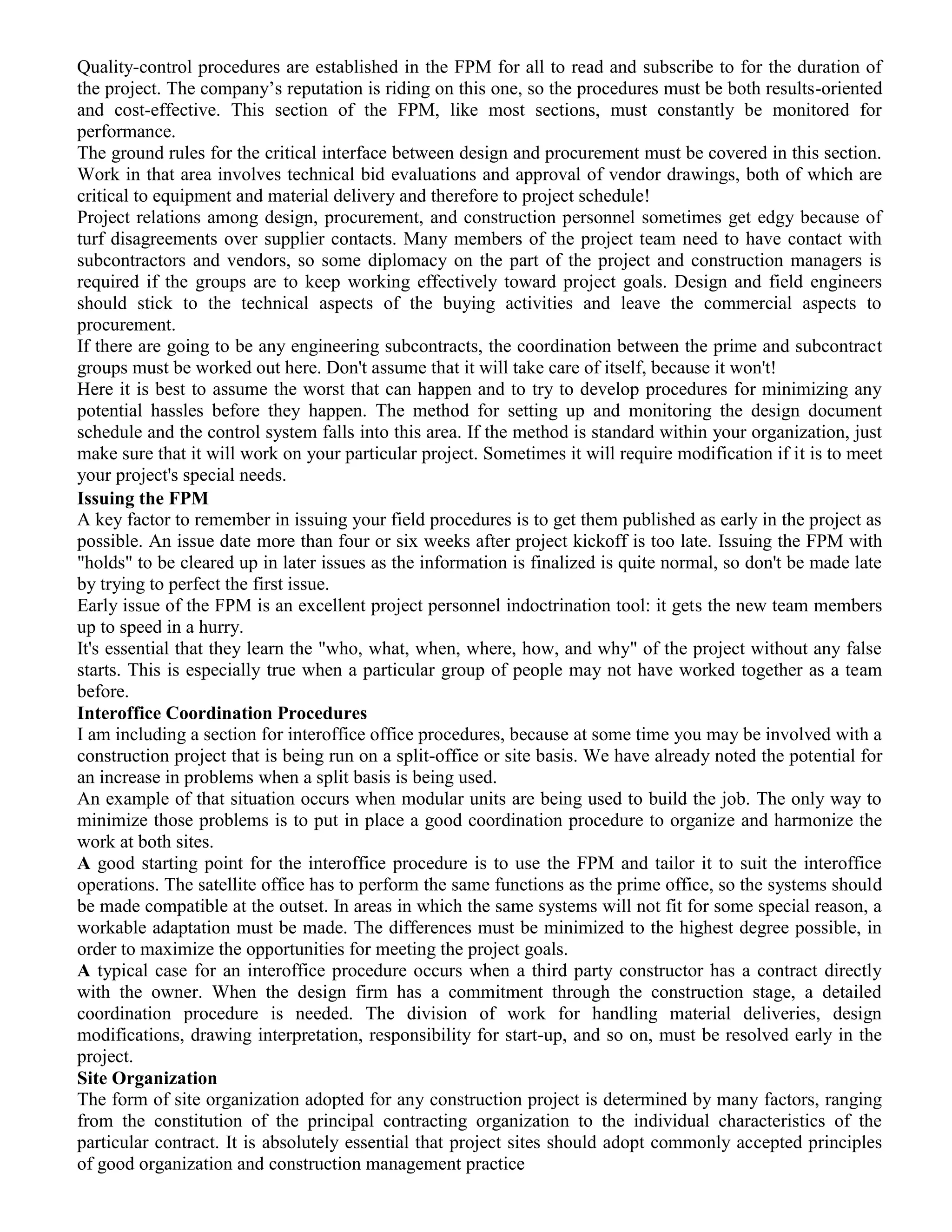
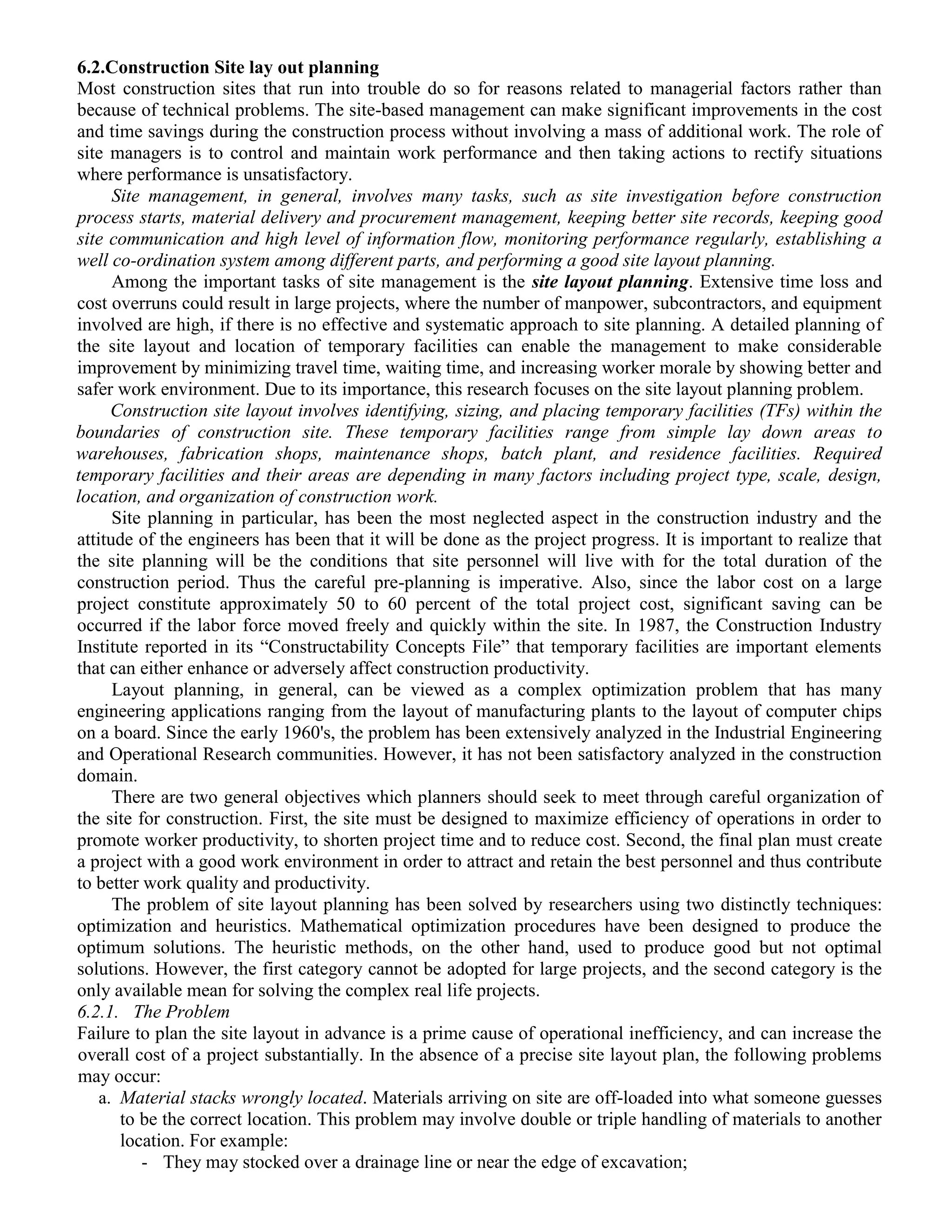
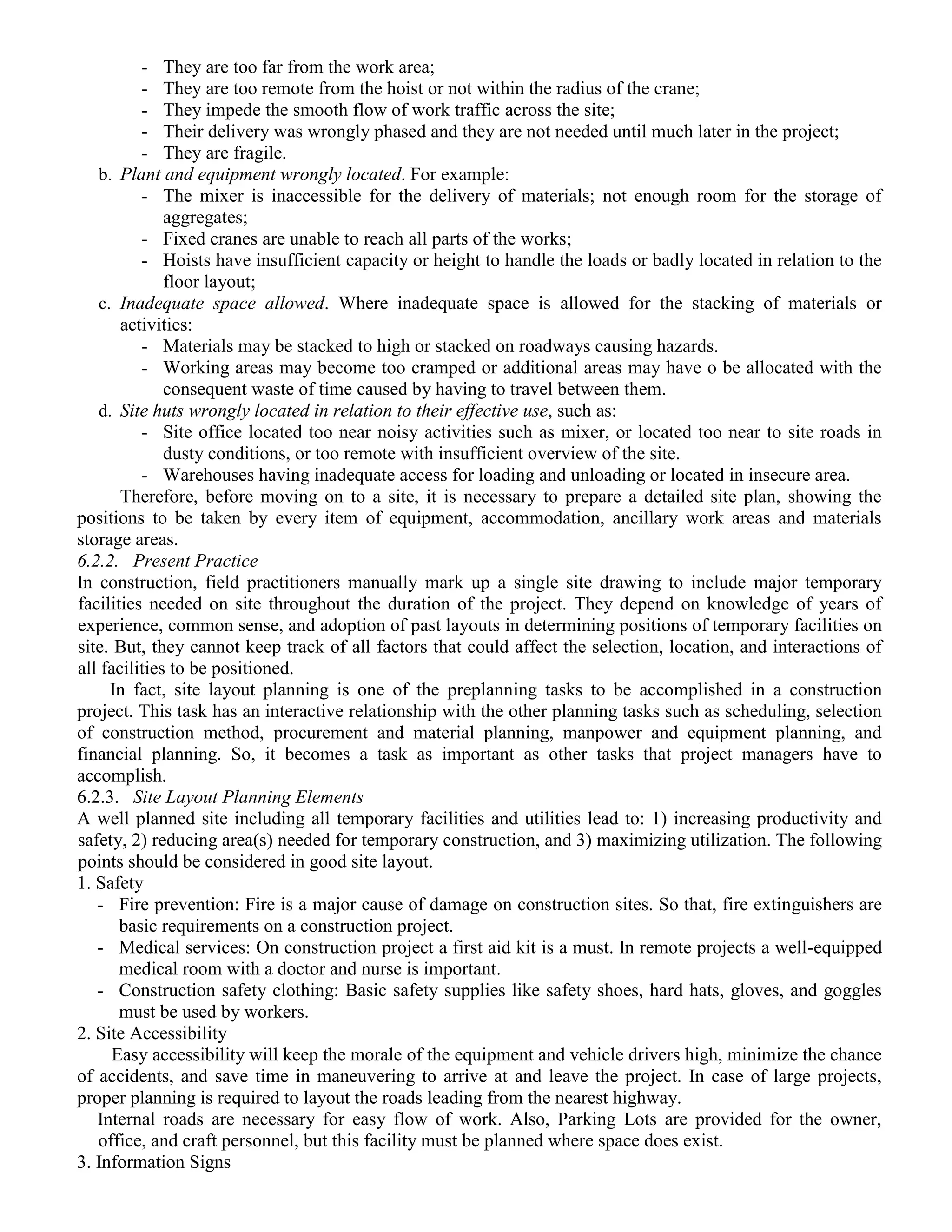
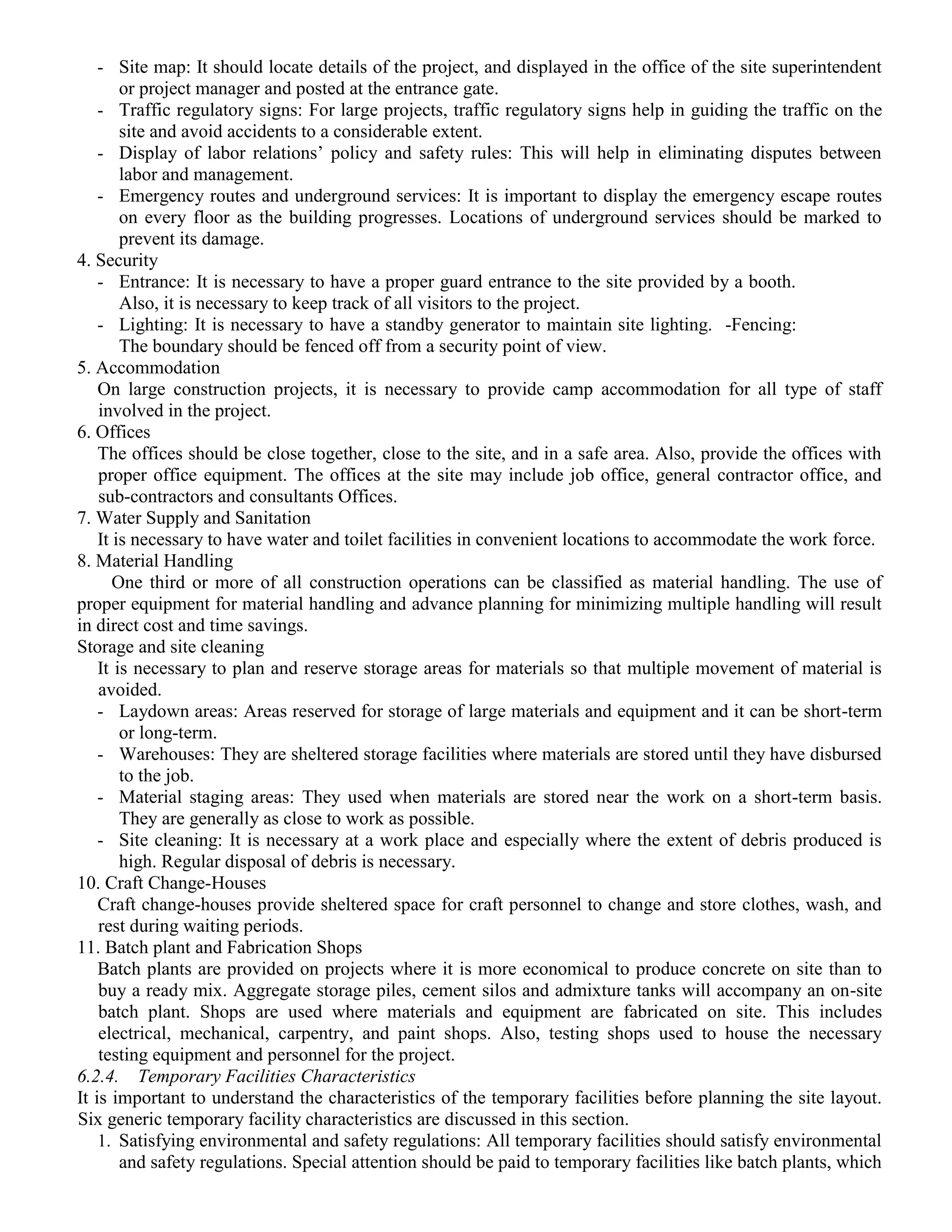

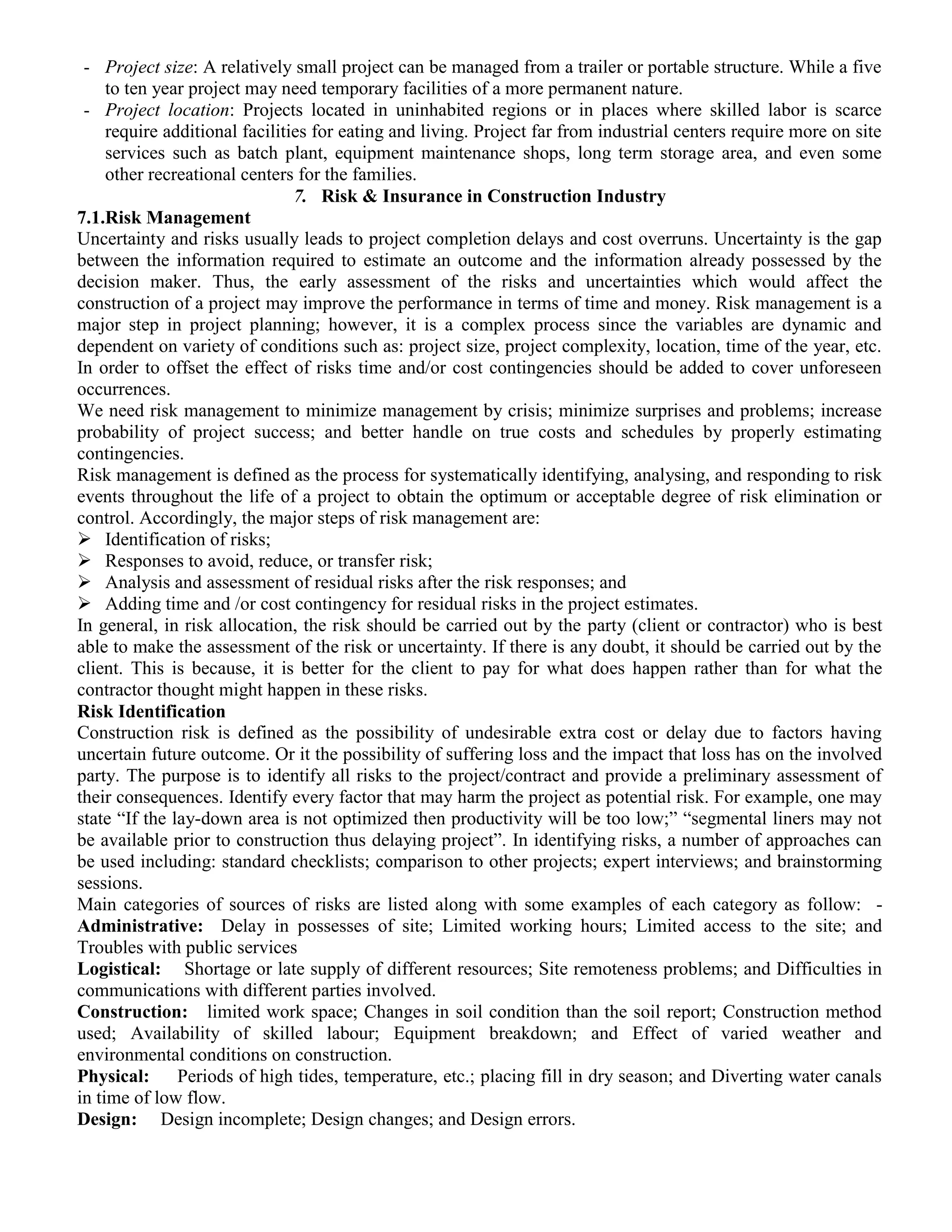
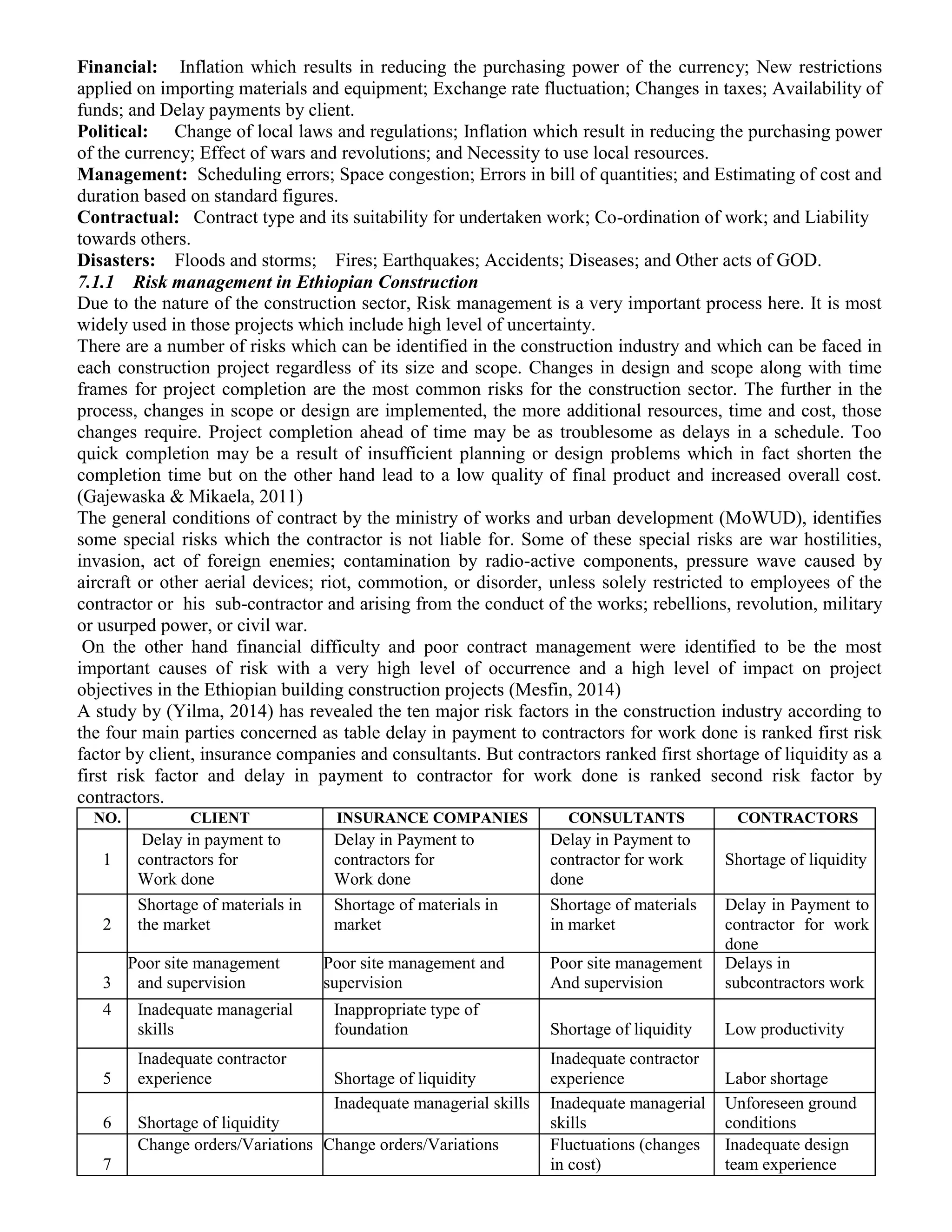
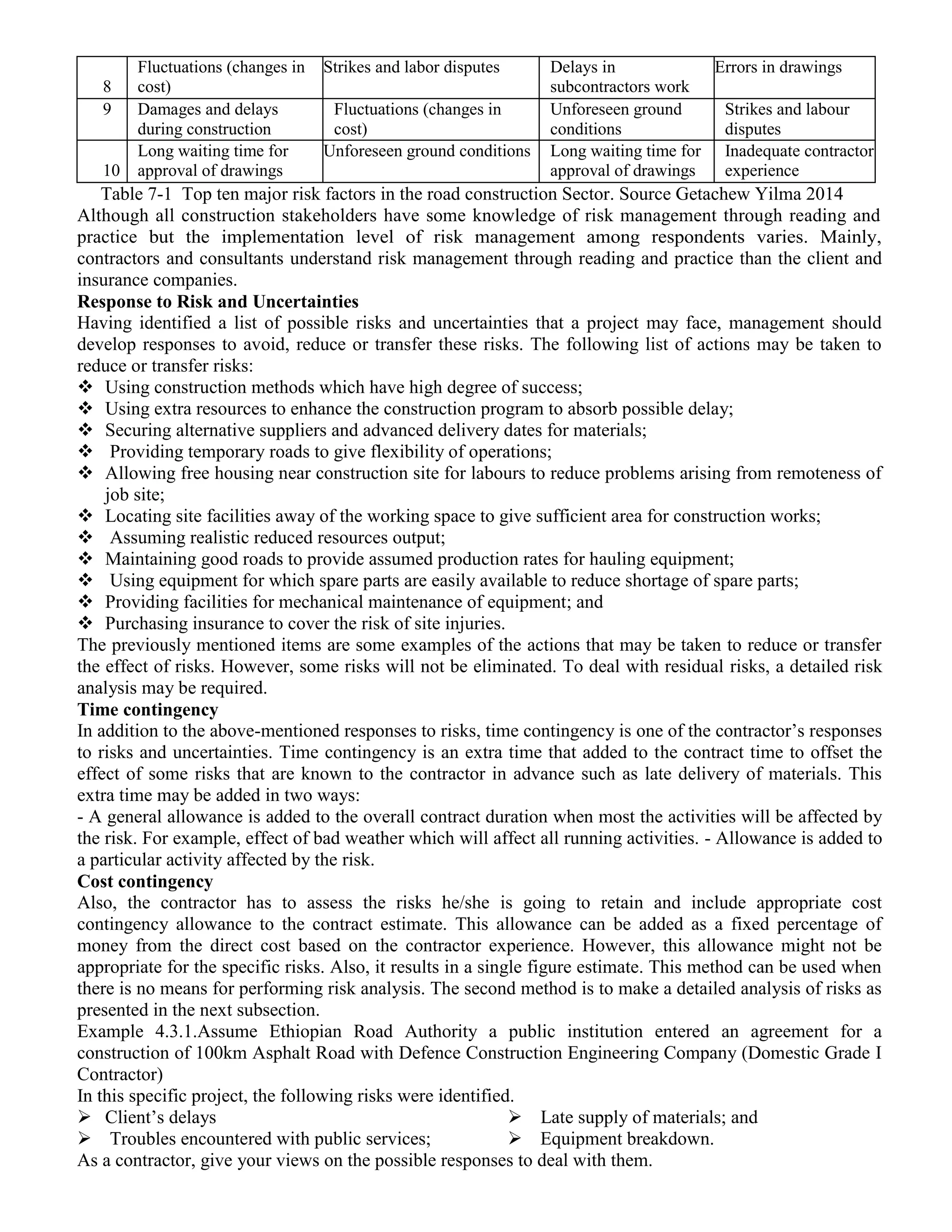
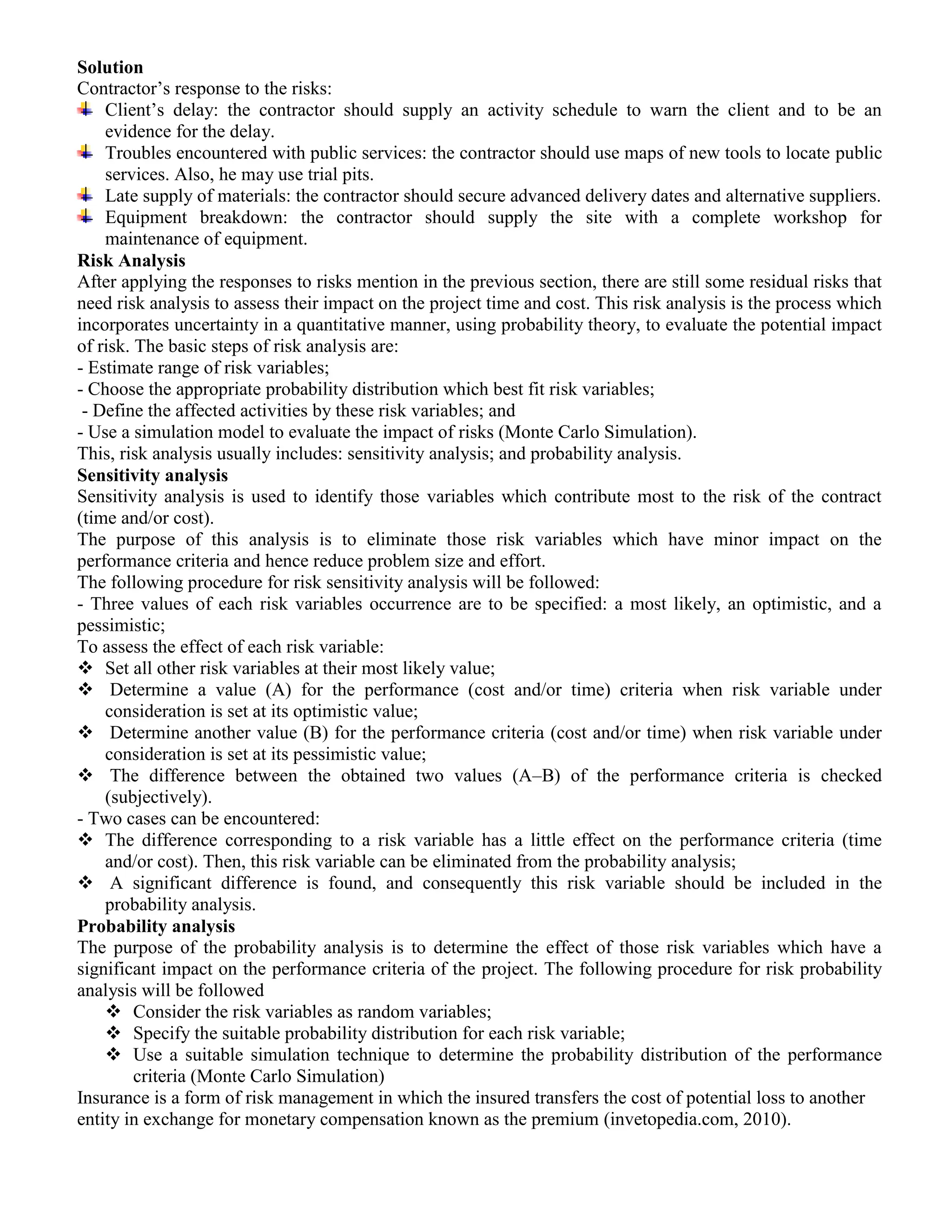
![Anderson [2005] defined insurance as an agreement where, for a stipulated payment called the premium,
one party (the insurer) agrees to pay to the other (the policyholder or his designated beneficiary) a defined
amount (the claim payment or benefit) upon the occurrence of a specific loss.
Insurance is a social device, in which a group of individuals (called “insured”) transfer risk to another party
(called the “insurer”) in order to combine loss experience, which permits statistical prediction of losses and
provides for payment of losses from fund contributed (premiums) by all members who transferred risk
[Pritchett, 1996].
Article 654(2) of the Commercial Code of Ethiopia[1960] provides a legal definition of insurance as
follows:
“An insurance policy is a contract whereby a person, called the insurer, undertakes against payment of one
or more premiums to pay to a person, called the beneficiary, a sum of money where a specified risk
materializes”.
In construction contract perspective construction insurance can be defined as a contract whereby the
insurance company seeks to provide coverage and indemnify the construction contractor or the client
against a potential peril, loss, damage, or liability that arises from the performance of the construction work
[Eschemuller, 2009].
According to [Akbiyikli, 2012] Construction insurance is defined also as a practice of exchanging a
contingent claim for a fixed payment to protect the interests of parties involved in a construction project
and it plays an increasingly important role in guaranteeing the success of projects, with insurers sharing
losses resulting from natural disasters and other contingencies.
Its primary function is to transfer certain risks from clients, contractors, subcontractors and other parties
involved in the construction project to insurers to provide contingent funding in time of difficulty.
Construction insurance plays an increasingly important role in guaranteeing the success of projects, with
insurers sharing losses resulting from natural disasters and other contingencies. However, insurance
sometimes doesn’t receive the attention it deserves because practitioners do not have a clear understanding
of risk allocation and the strategy of risk management through insurance.
Insurance policies are often confused with surety bonds. This confusion is understandable because bonds
are not only written by major insurance companies, they also share the same distribution network and, in
the marketplace, a common jargon. For example, fees for both insurance policies and surety bonds are
referred to as “premiums” and payouts are referred to as“claims.”
Despite these similarities, insurance policies are distinct from surety bonds. For example, insurance
instruments are two-party agreements whereby one party (the Insurer) agrees to indemnify another (the
Insured) for a defined loss or set of losses, while surety bonds involve three parties.
Insurance is based on the risk-spreading principle of underwriting. Premiums are collected from a large
population of insured, and premium levels are determined by actuarial analysis, which takes into account
demographic and other factors. It is accepted that losses will be incurred; however,
Under the principle of risk-spreading, the losses of a few are covered by the premiums of many.
Surety bonds, by contrast, are effectively credit instruments, and are underwritten much like a banker
assesses a loan application. In this case, no losses are anticipated and if the underwriter believes a
contractor may not be able to perform his or her contractual obligations, no bond will be issued.
“Premiums” for bonds do not pay for losses; rather, they are a service fee for extending the required credit.
The Surety also has the right to recover any losses from its Principal should it be forced to pay out under a
bond. Contractors seeking surety bonds are invariably required to sign an indemnity agreement under
which they specifically agree to those terms.
7.2.Principles of Risk Allocation in Construction
The process of determining and allocating risk is fundamentally linked to the drafting of the conditions of
contract, which is effectively the choice of standard form of conditions of contract and any amendments
thereto [Premaraj, 2005]. Whether the contract is for construction, construction engineering and inspection,
design, design-build, or some other aspect of highway construction management, it defines the roles and
responsibilities for risks. Risk allocation in any contract affects cost, time, quality, and the potential for
disputes, delays, and claims [FHWA, 2006]. Engineering and construction contracts incorporate](https://image.slidesharecdn.com/cpmlecturenote4567-231019061901-c5bef43e/75/CPM-lecture-note-4-5-6-7-pdf-37-2048.jpg)
![specifications, drawings and schedules to communicate the objectives of the contract. The contract is the
vehicle for risk allocation.
The allocation of risks between the contracting parties in a construction contract is one of four criteria
usually applied for the choice of the type of contract conditions to be used. The other three are: the
allocation of functions that exist in the construction process; the choice of the preferred method of
remuneration; and the allocation of the management functions [Bunni, 2003]
The objectives of risk allocation can vary depending on unique project goals, but the four fundamental
tenets of sound risk allocation should always be followed [FHWA, 2006]:
1. Allocate risks to the party best able to manage them.
2. Allocate the risk in alignment with project goals.
3. Share risk when appropriate to accomplish project goals.
4. Ultimately seek to allocate risks to promote team alignment with customer-oriented performance goals.
There must also be an appreciation that mere allocation of risk does not mean that the risk at all times will
be maintained with the party so allocated since conduct during the progress of a project may cause the risks
allocated to switch [Premaraj, 2005]. It was early attempted to formulate an acceptable formula for risk
allocation by Prof Max Abrahamson [Abrahamson, 1984].
He said that a Party should bear a construction risk where:
1. It is in his control, i.e., if it comes about it will be due to willful misconduct or lack of reasonable
efficiency or care; or
2. He can transfer the risk by insurance and allow for the premium in settling his charges to the other
party and it is most economically beneficial and practical for the risk to be dealt with in that way; or
3. The preponderant economic benefit of running the risk accrues to him; or
4. To place the risk on him is in the interests of efficiency (which includes planning, incentive,
innovation) and the long term health of the construction industry on which that depends; or
5. If the risk eventuates, the loss falls on him in the first instance, and it is not practicable or there is no
reason under the above four principles to cause expense and uncertainty, and possibly make mistakes in
trying to transfer the loss to another.
It is important to note that the responsibility and liability for damage to property and/or personal injury
emanating from uninsurable risks must be clearly defined in any contract. Bunni [2003] classified
uninsurable risks with four categories as outlined hereunder:
1. Foreseeable risks: An insurer will argue that if a contractor stores cement in an uncovered condition
during a rainy season, then any damage caused is foreseen to be inevitable and, thus, is not the liability of
the insurer. On the other hand, if the cement was stored in a watertight shed and the roof of the shed blows
away under severe wind, then the contractor will argue that this is unforeseen damage.
2. Unquantifiable risks: A consequential economic risk is unquantifiable, even in a certain circumstance.
It is, therefore, very rarely covered. However, the word ‘consequential’ must not be confused with
‘consequence’ as in risks resulting as a consequence of defective design, material and/or workmanship
because these risks are quantifiable and their limit is the value of the contract which is insured. Such
damage resulting from, or occurring as a consequence of these defects is insurable and the intention of a
good insurer must always be clear in this respect. Insurance policies must be written in clear and precise
language at all times but more especially so when dealing with this issue because, otherwise, it could result
in a dispute if repair to a resultant damage is costly.
3. Political risks and risks on an international scale: War is a good example of these risks that are normally
uninsurable. The reason is that the principle of the contribution of many for the benefit of an individual
suffering loss breaks down in such a situation, unless governmental institutions carry out the insurance.
4. Causation: To prove the cause of any damage on a project is to establish the responsibility and liability
for it and to establish whether or not the damage is covered through the provisions of the insurance
contract. If such a cause cannot be proven for any particular risk, the risk becomes uninsurable.
7.3.Nature of Construction Risks
The sensitivity of construction projects to an extremely large matrix of risks is due to the inherent
characteristics of construction projects (Bunni, 2003).
A construction project is a unique product. It has:](https://image.slidesharecdn.com/cpmlecturenote4567-231019061901-c5bef43e/75/CPM-lecture-note-4-5-6-7-pdf-38-2048.jpg)
